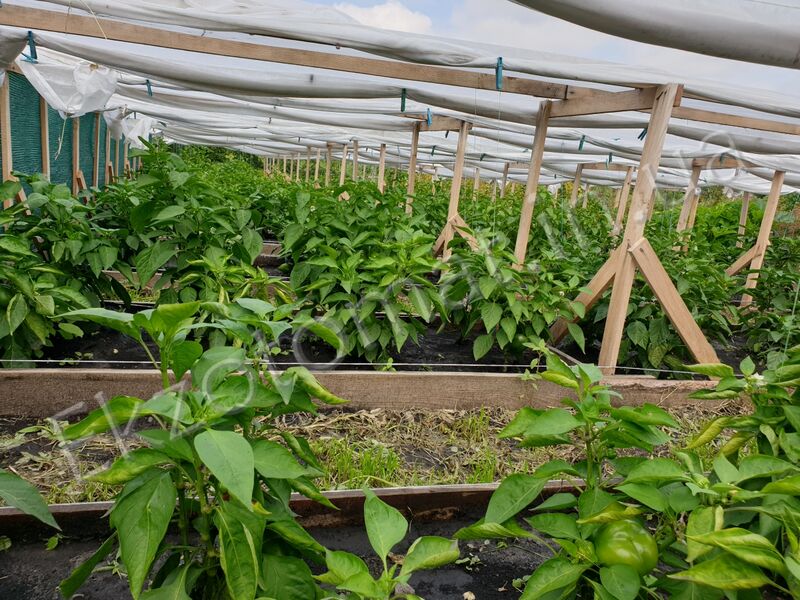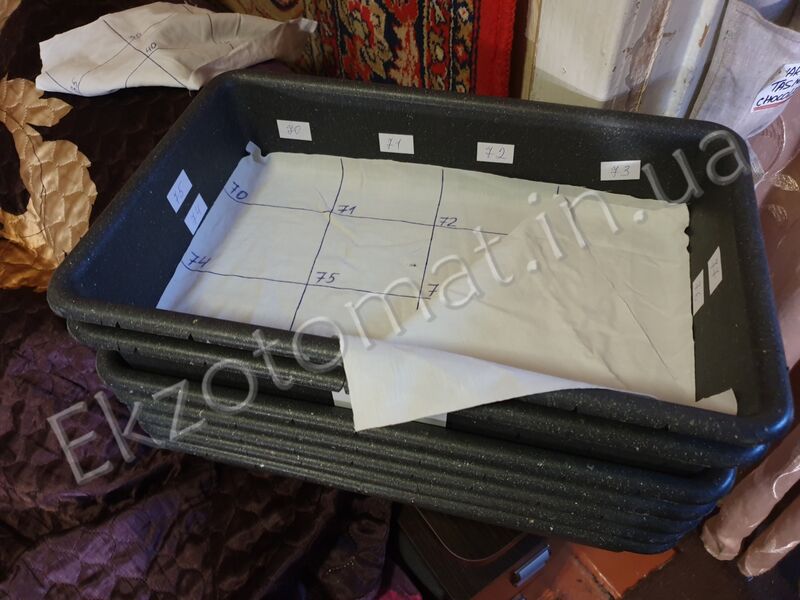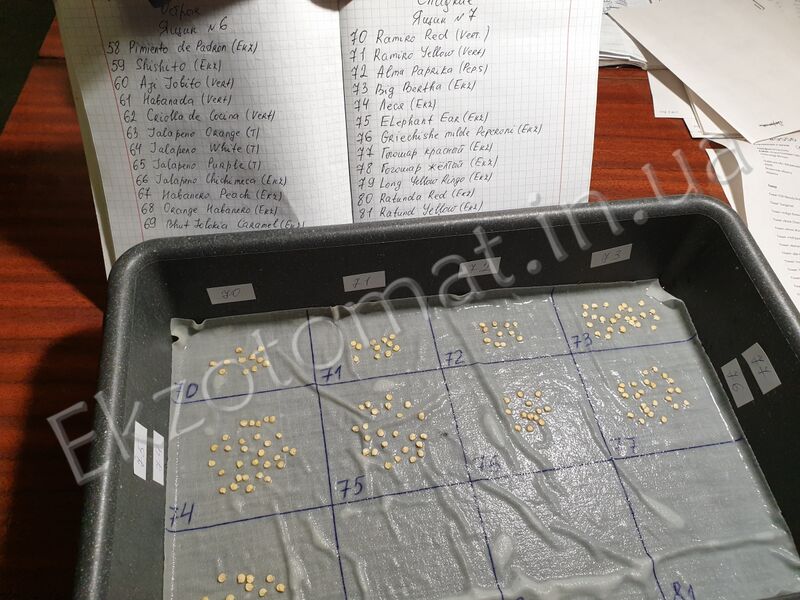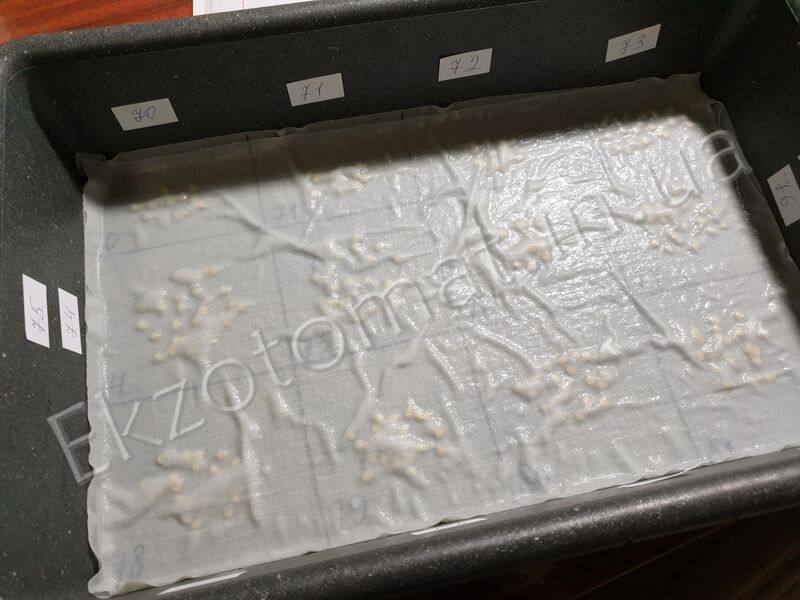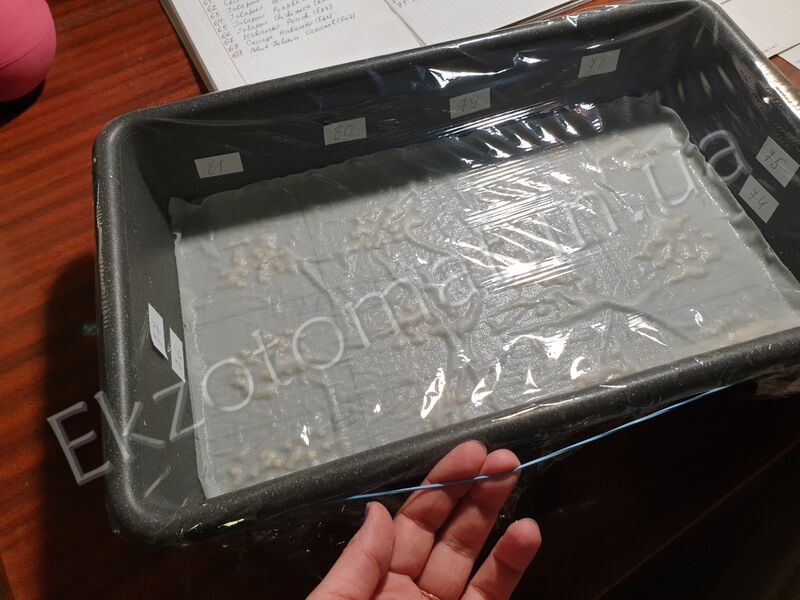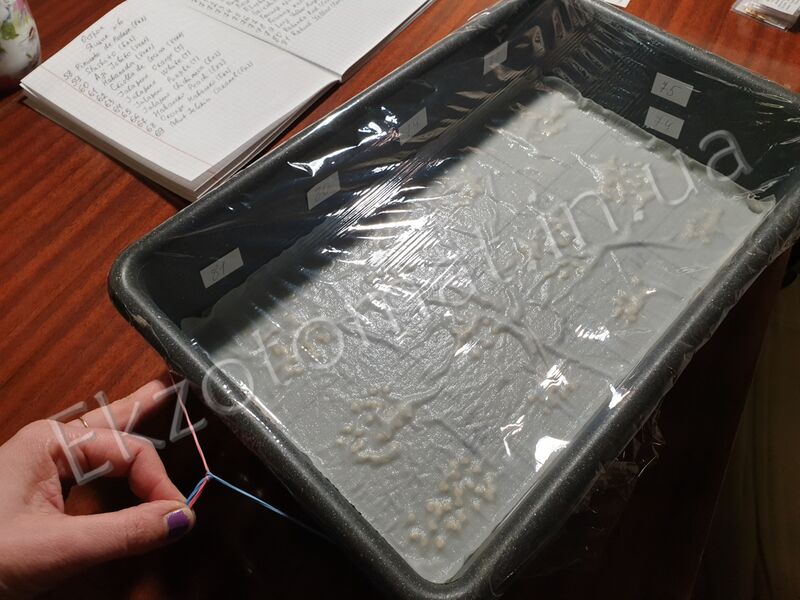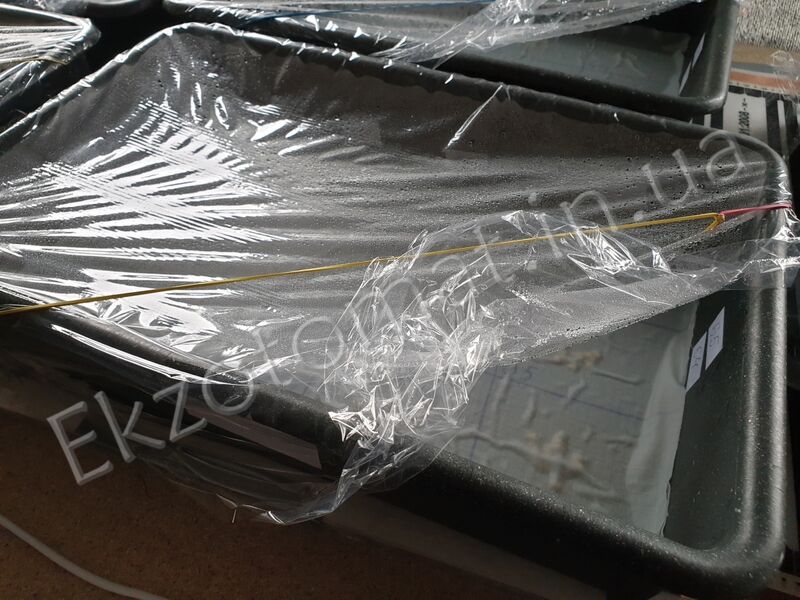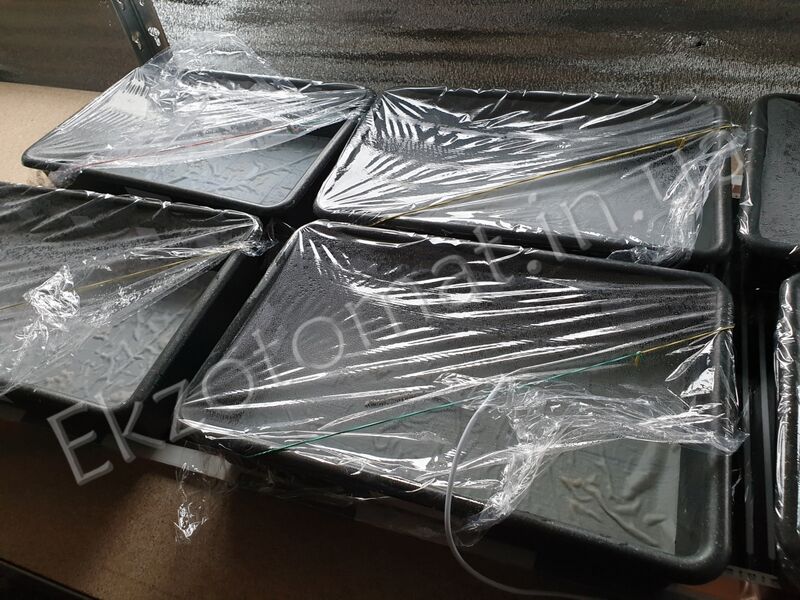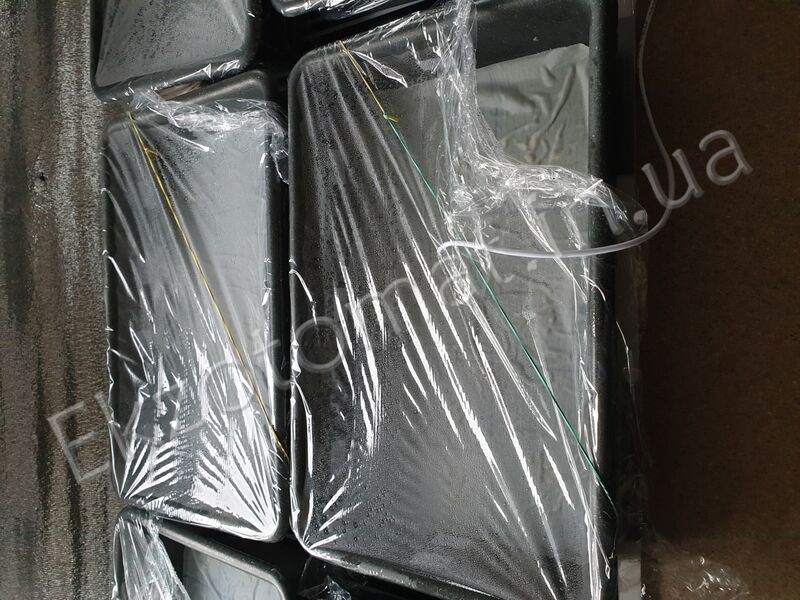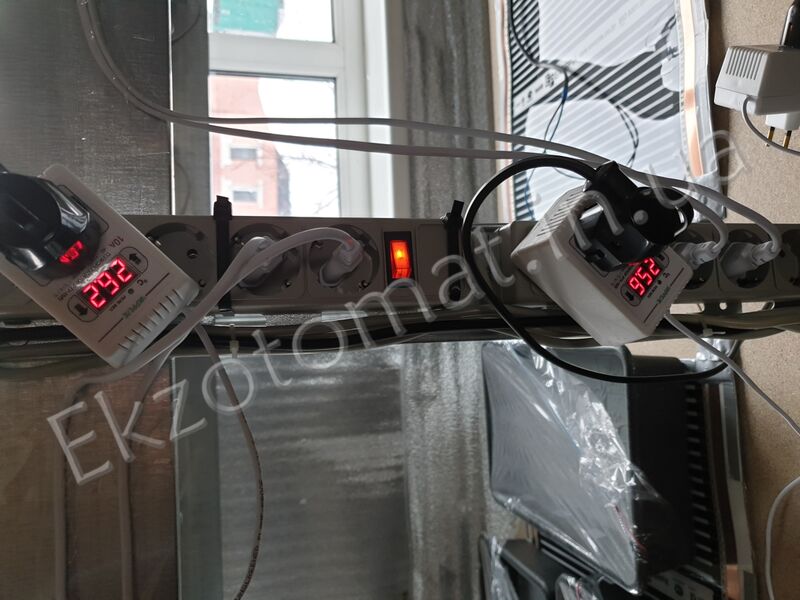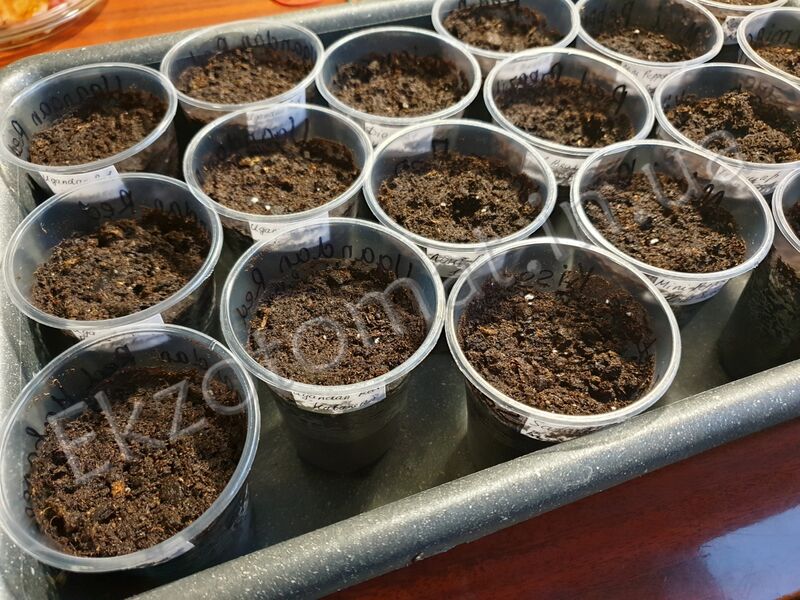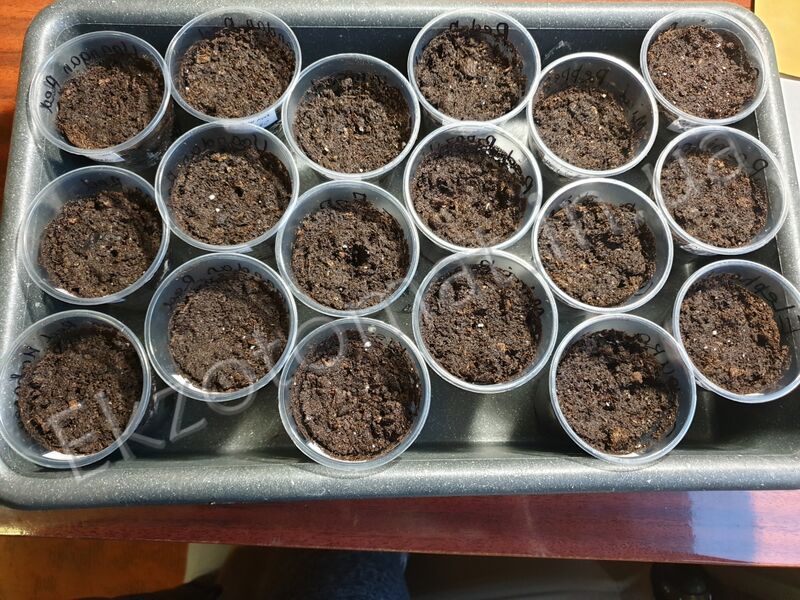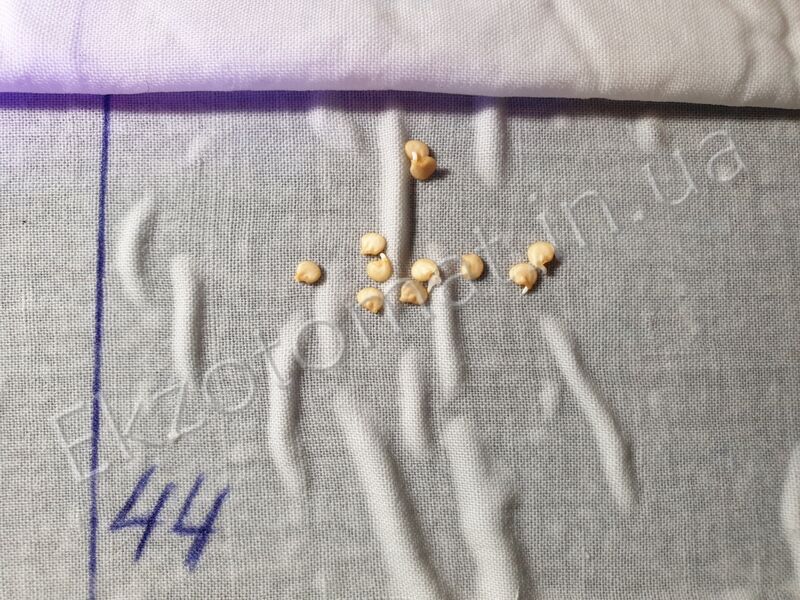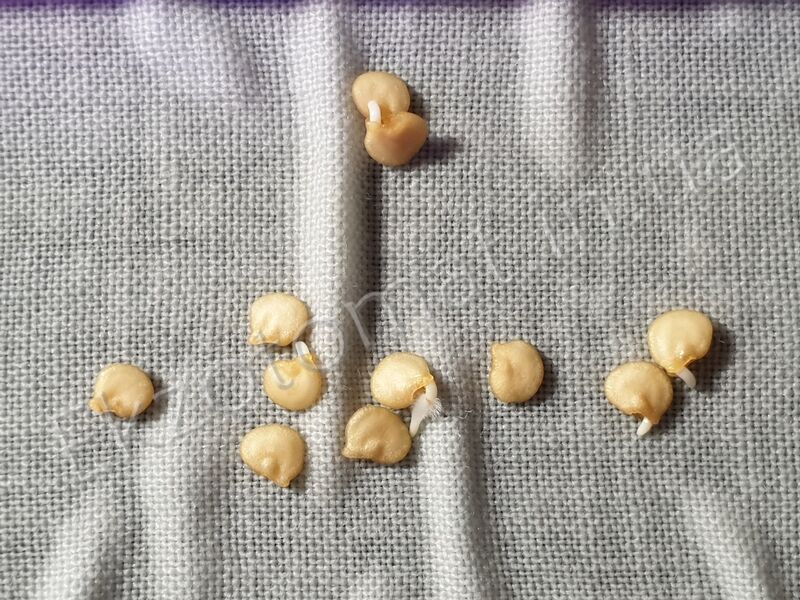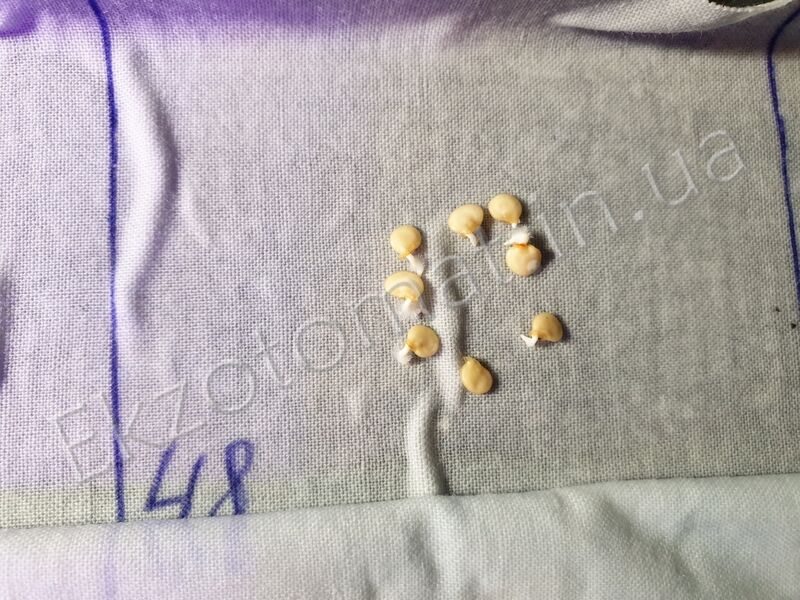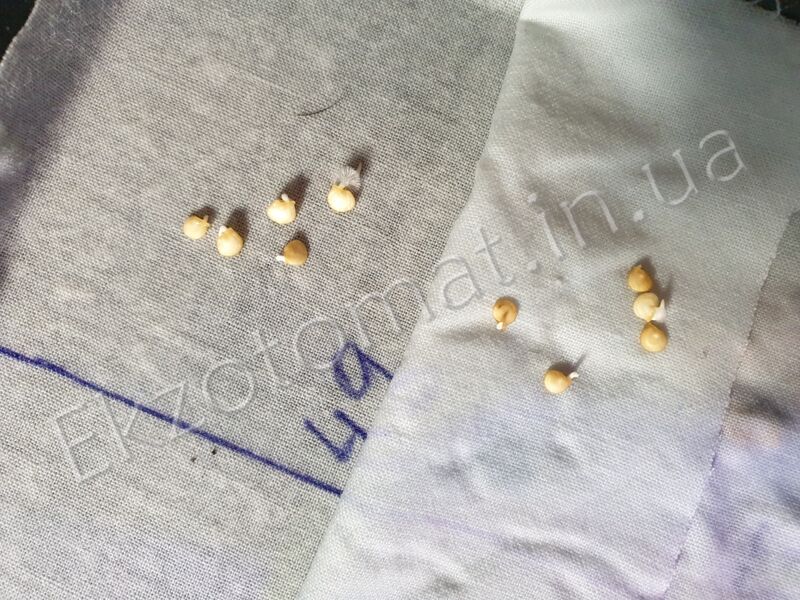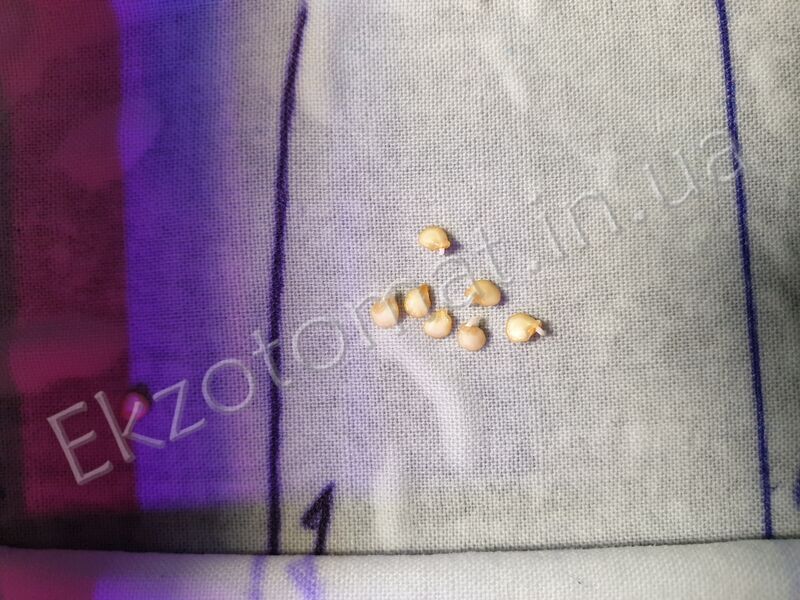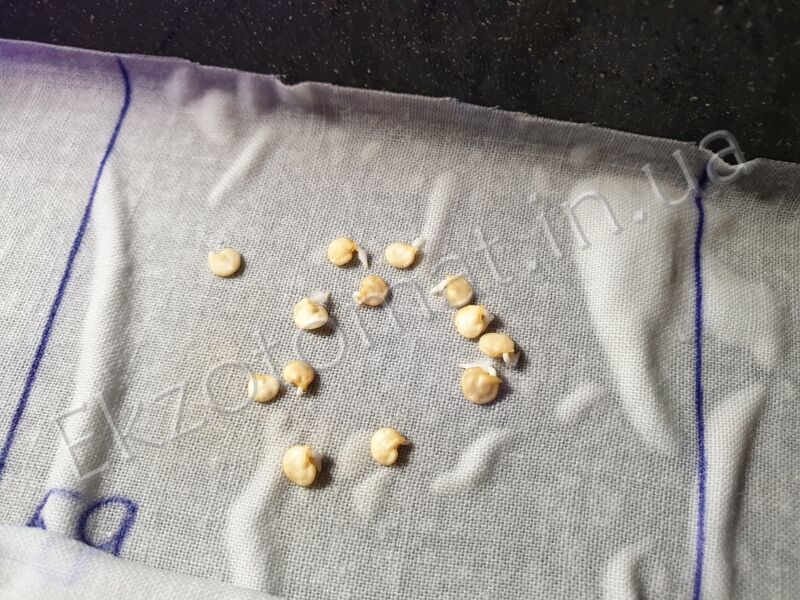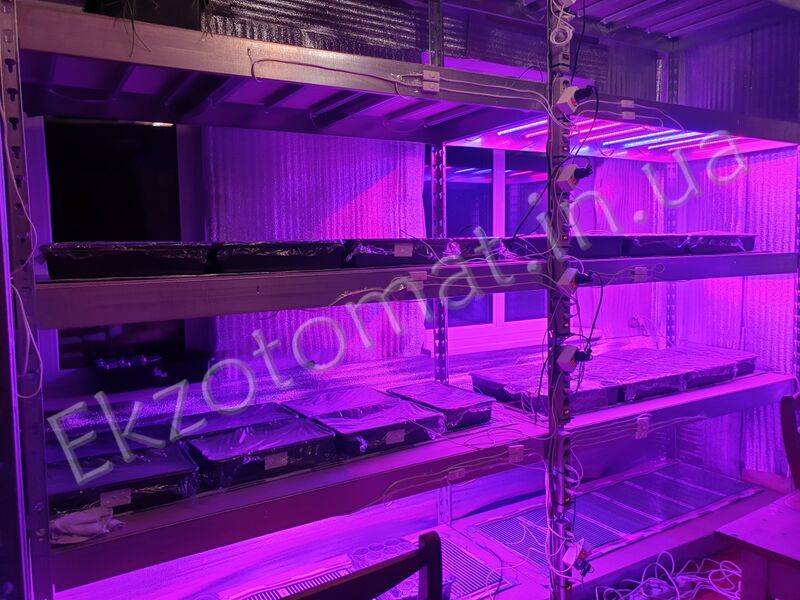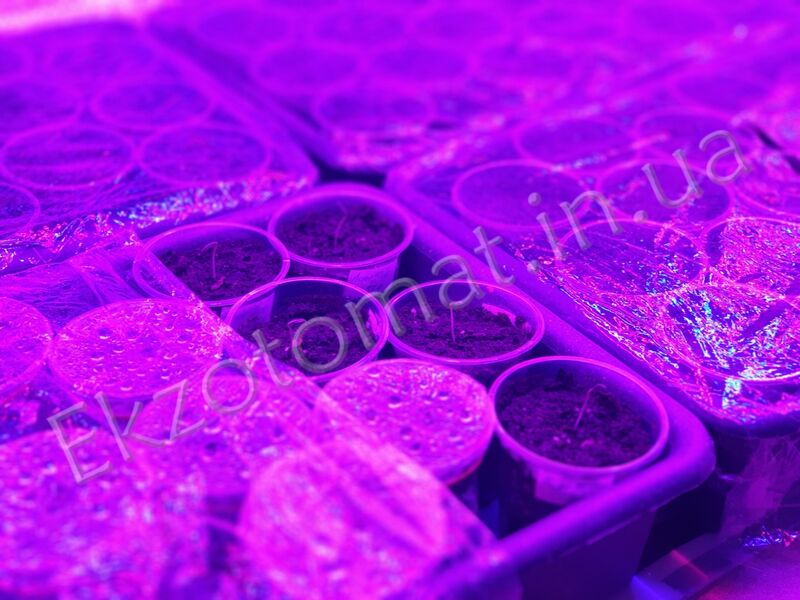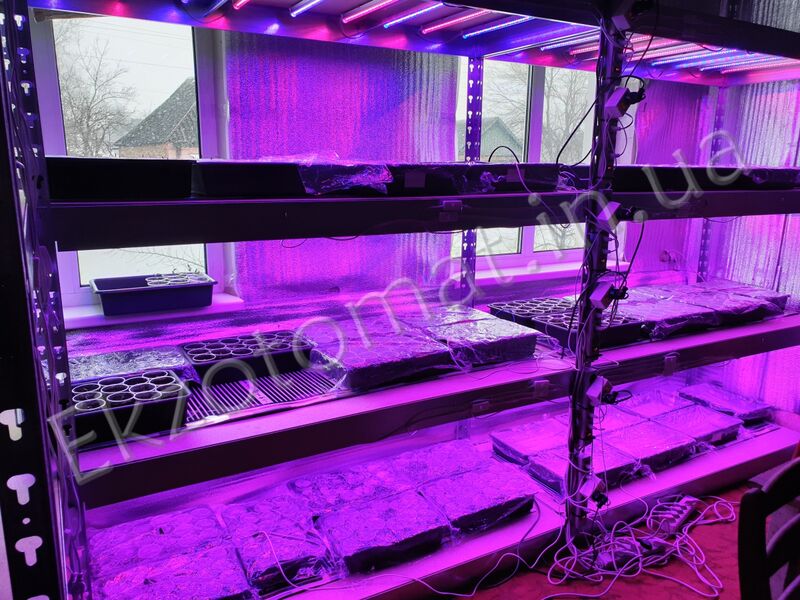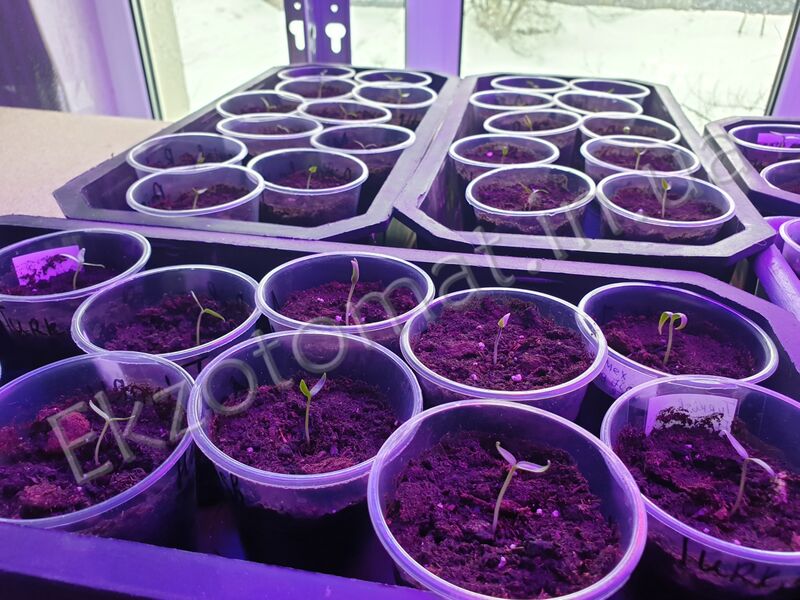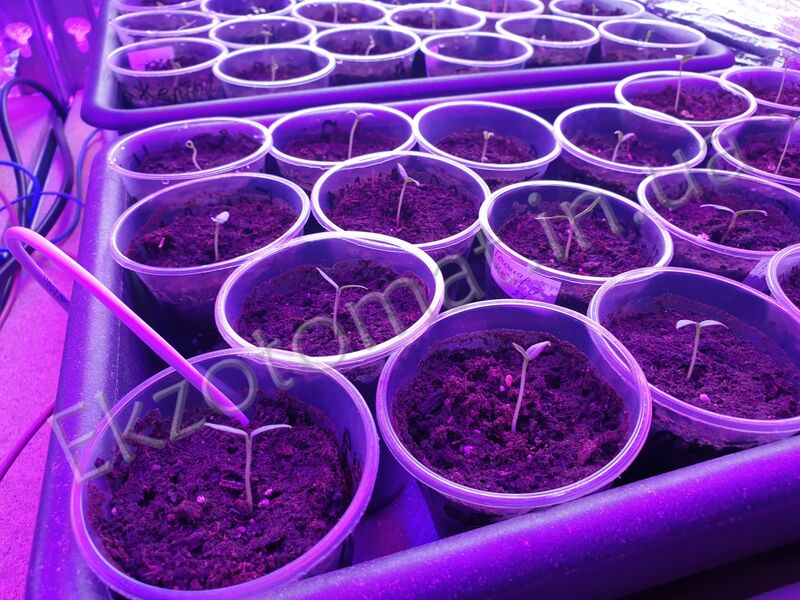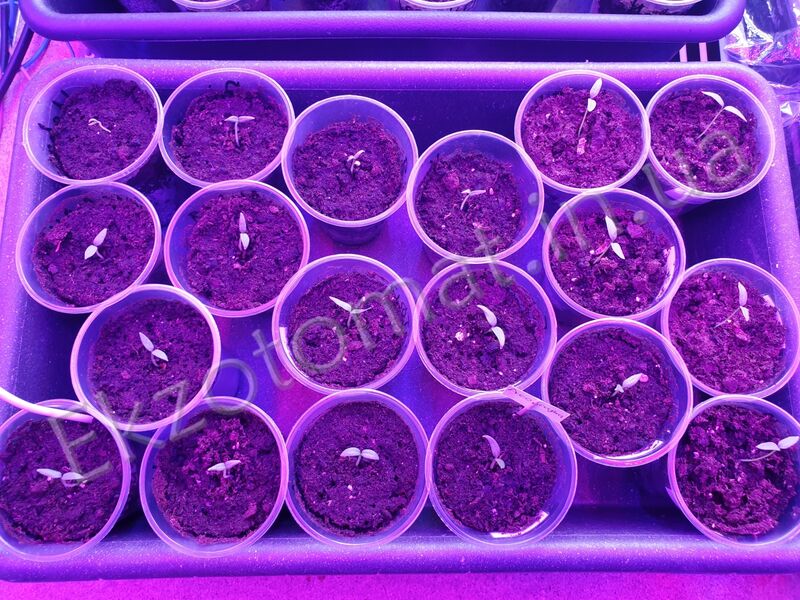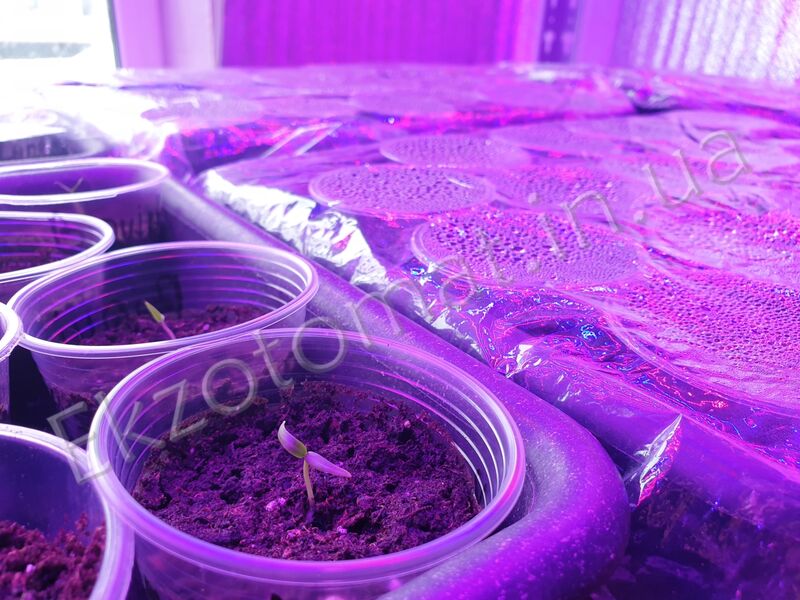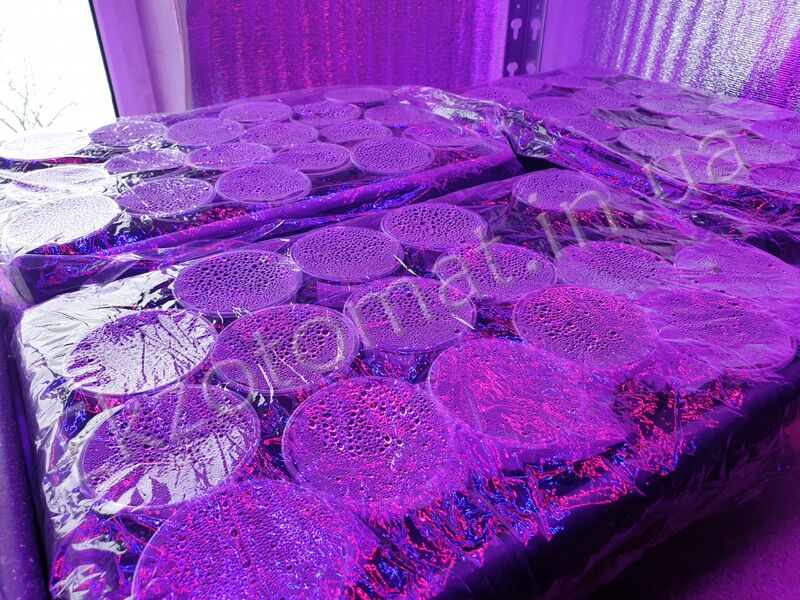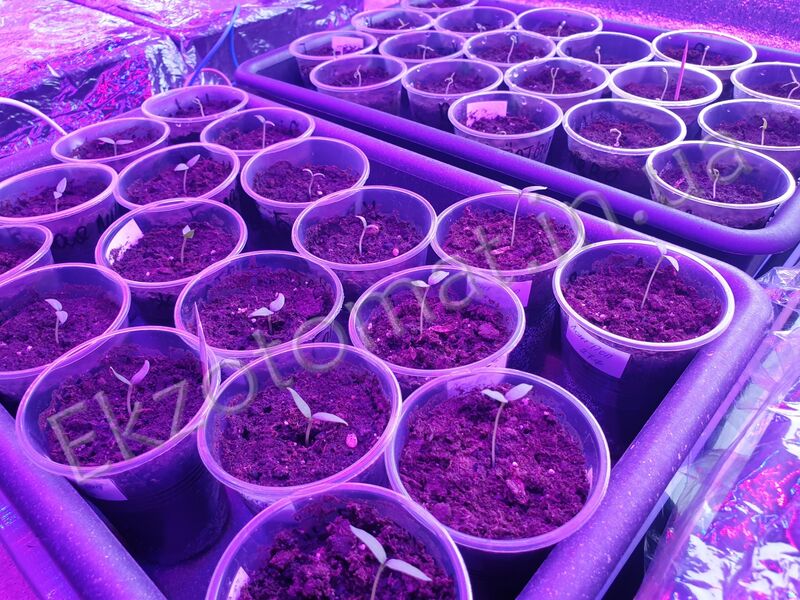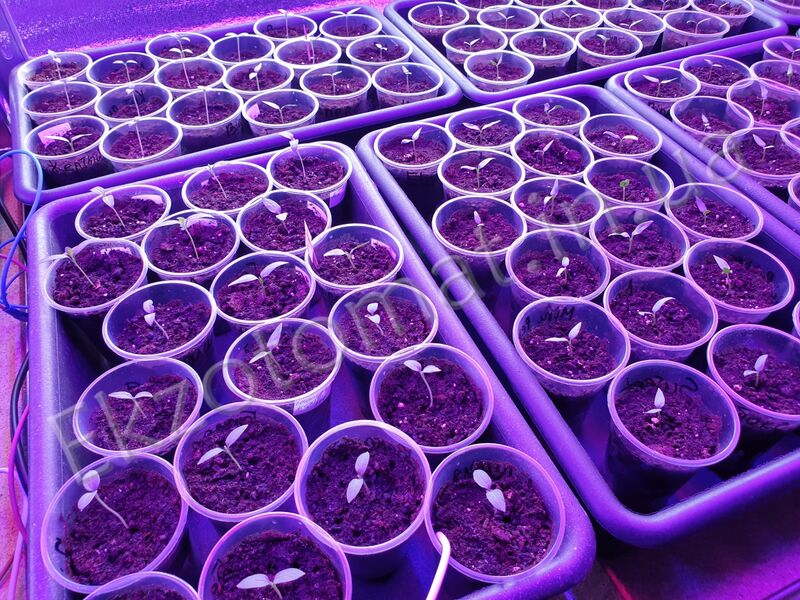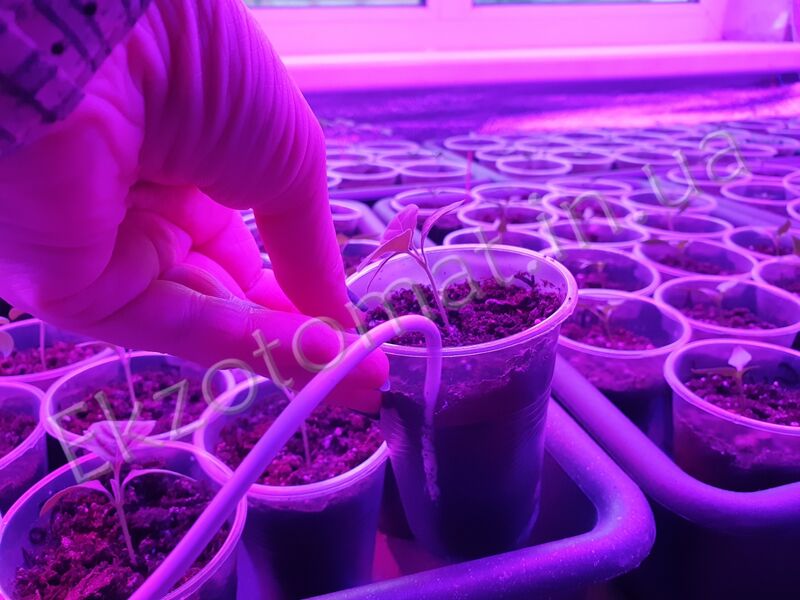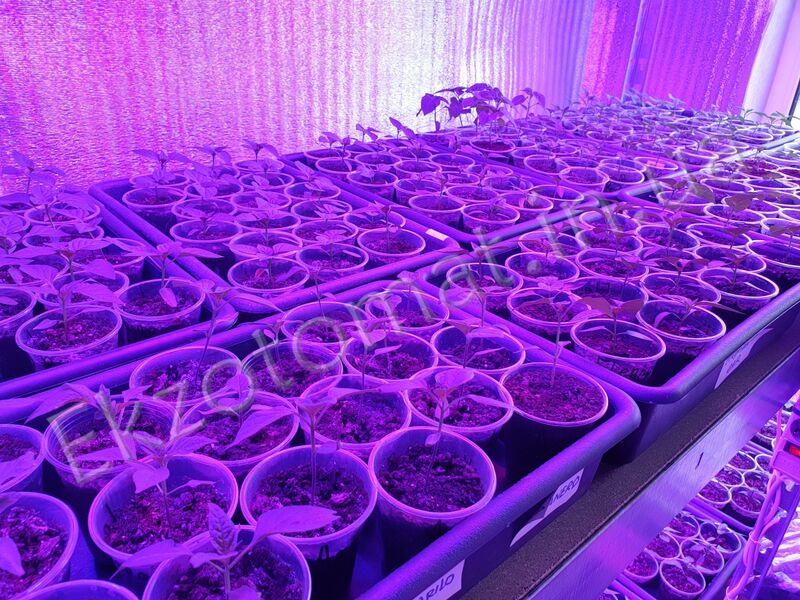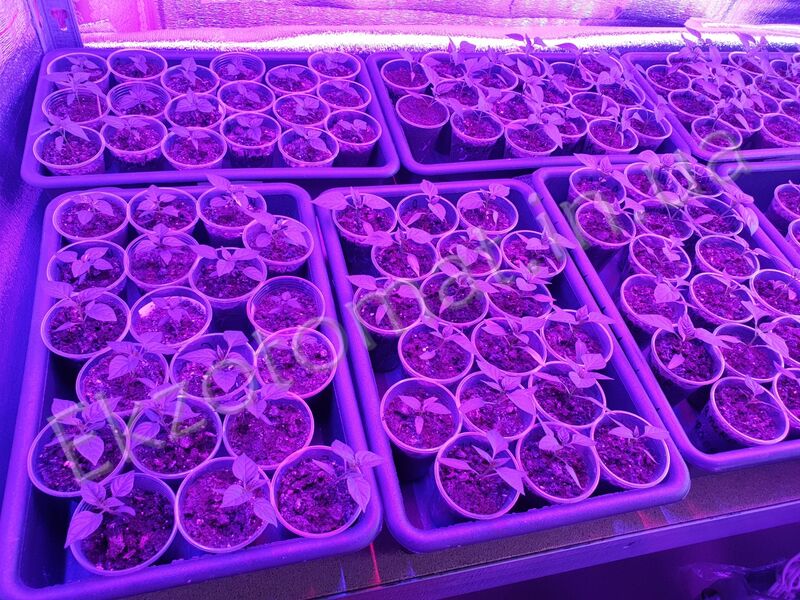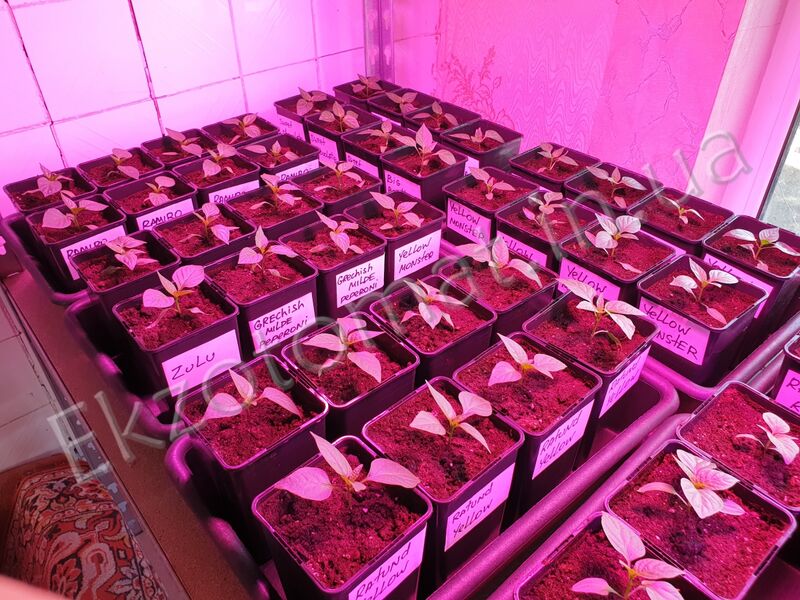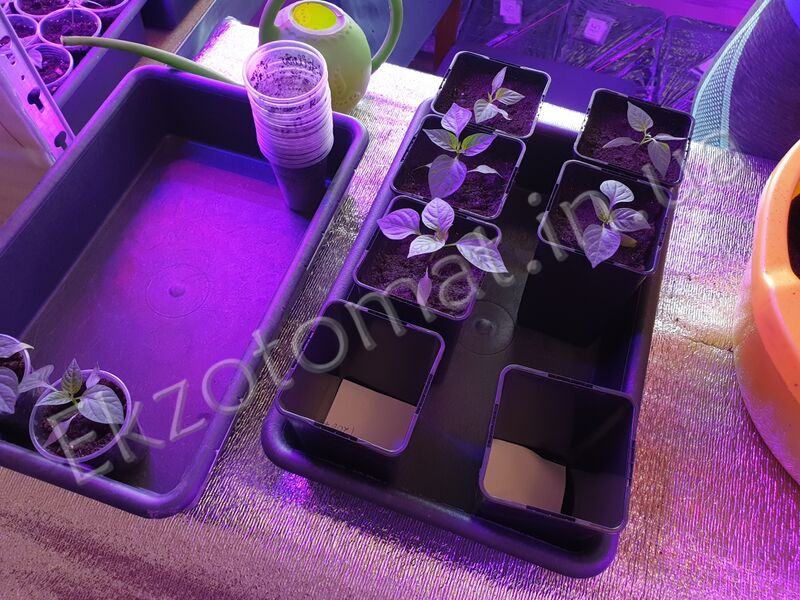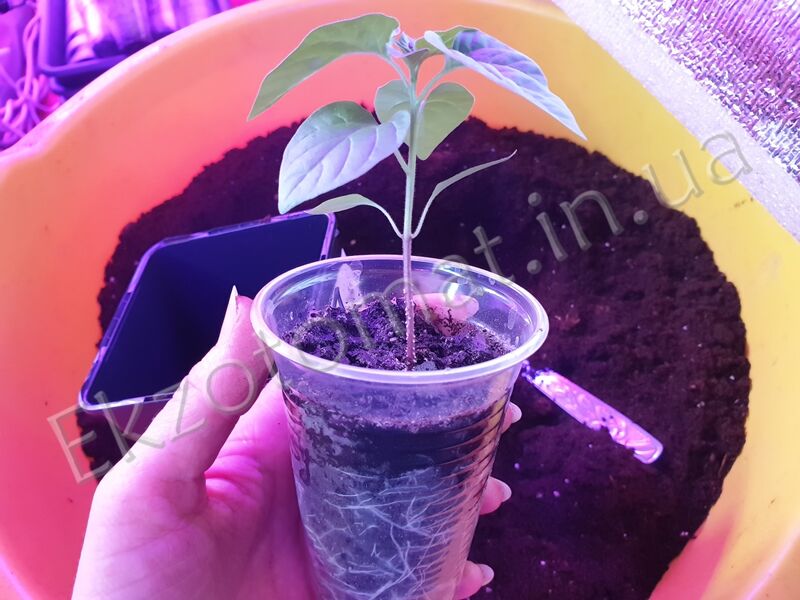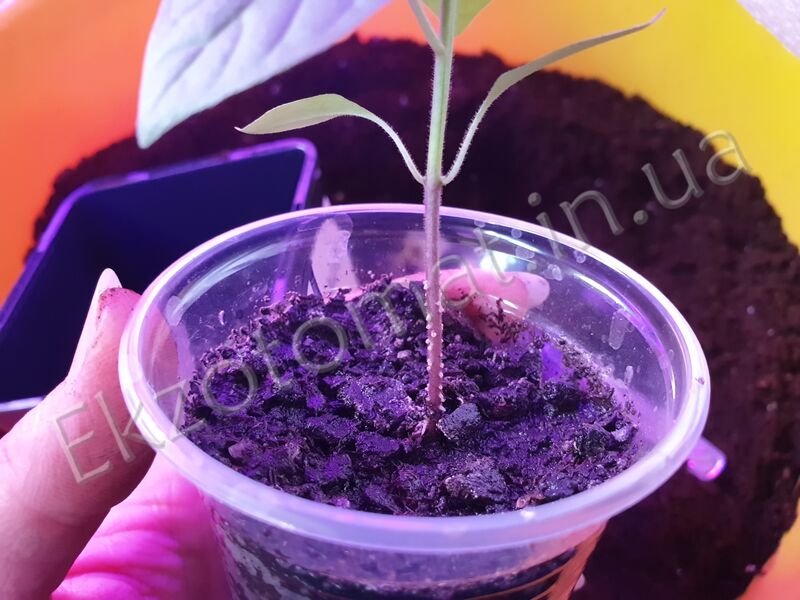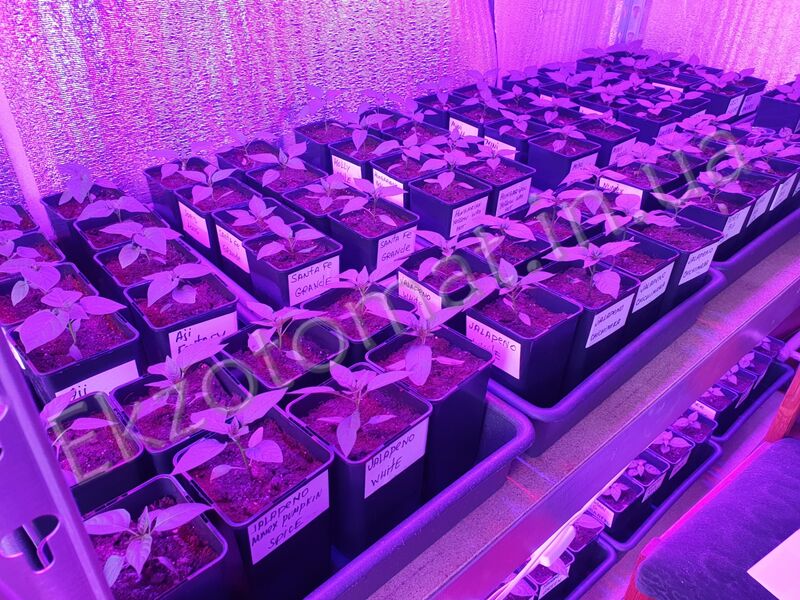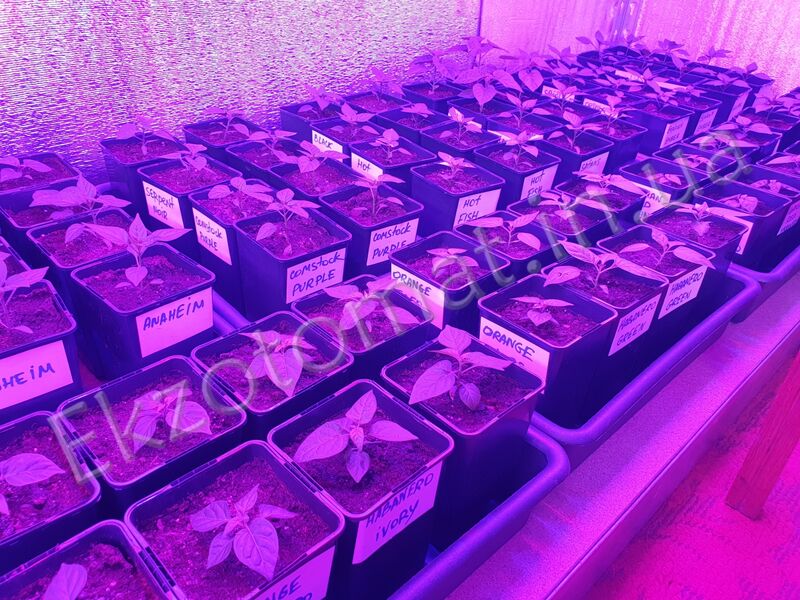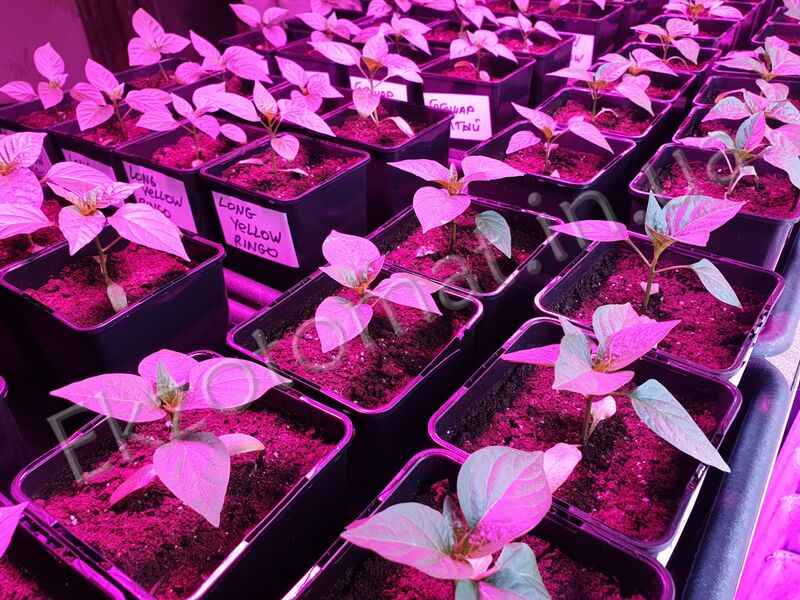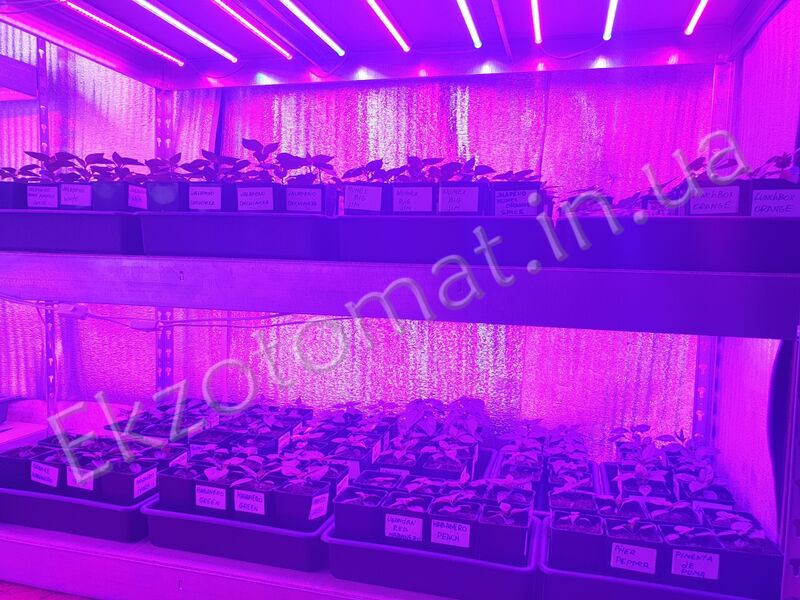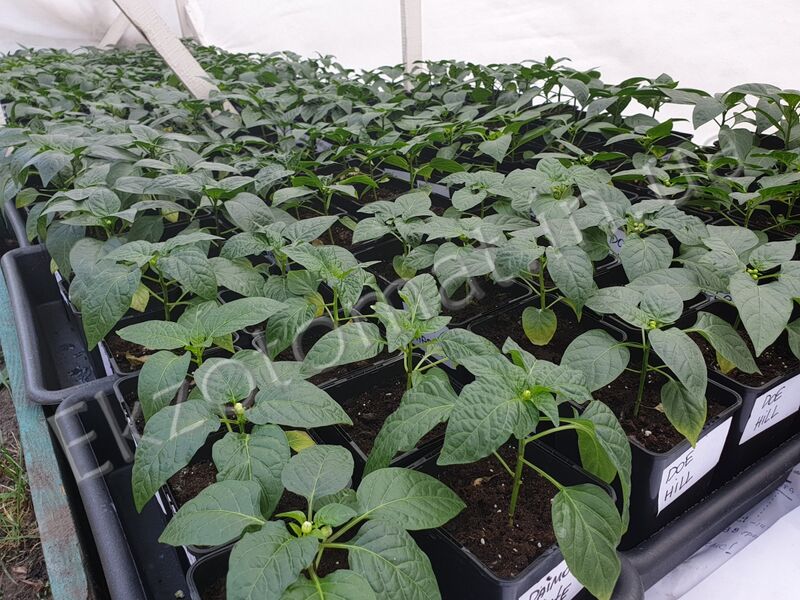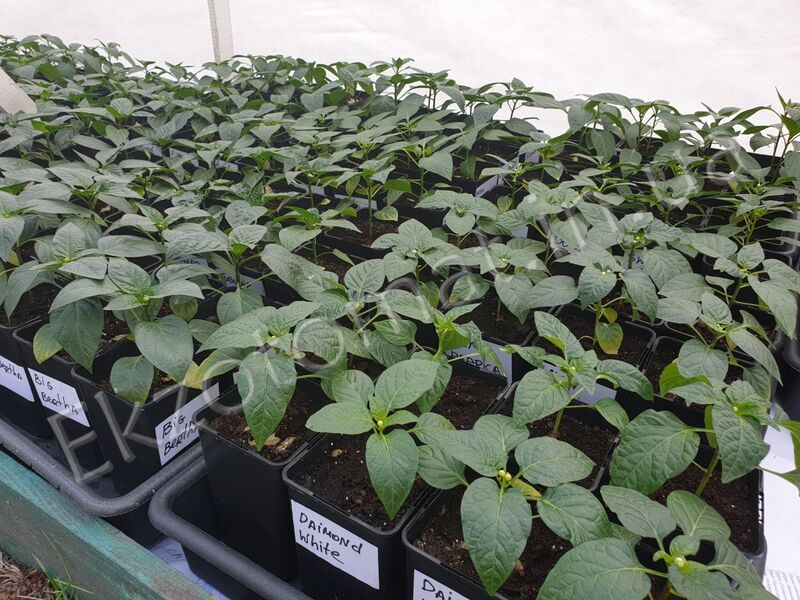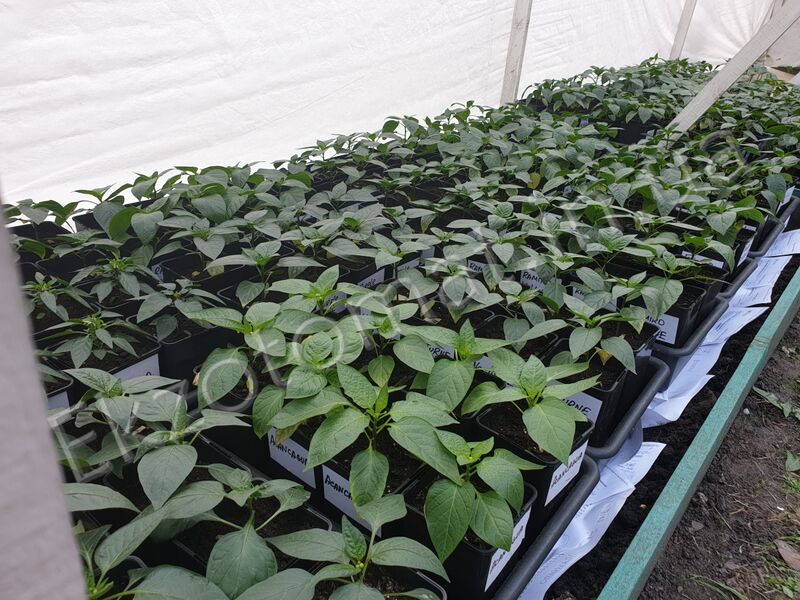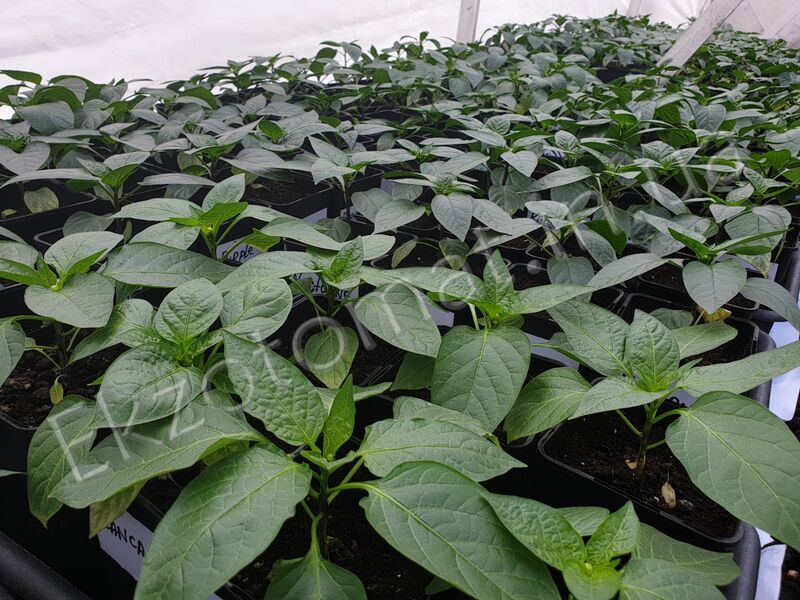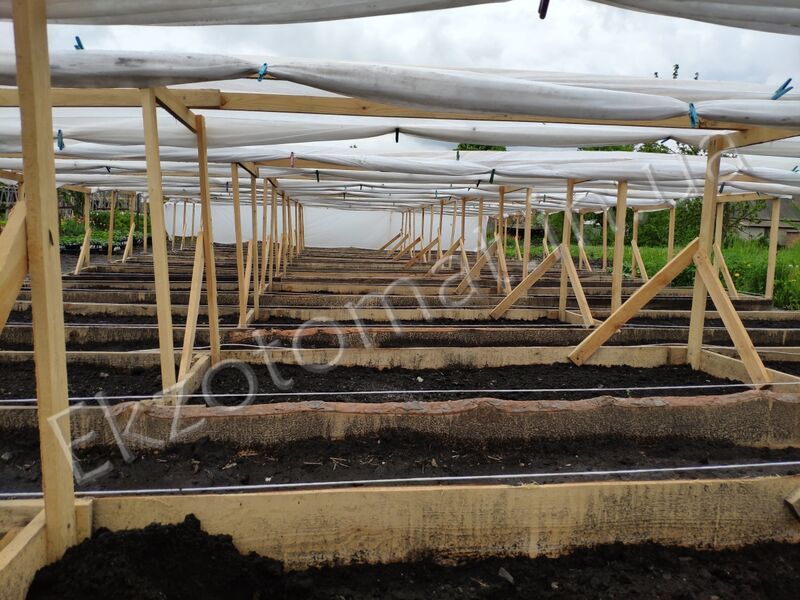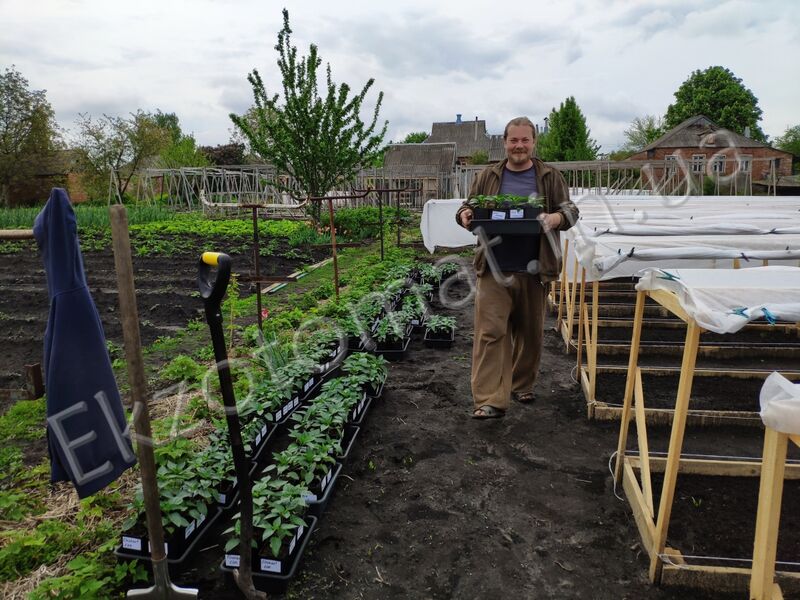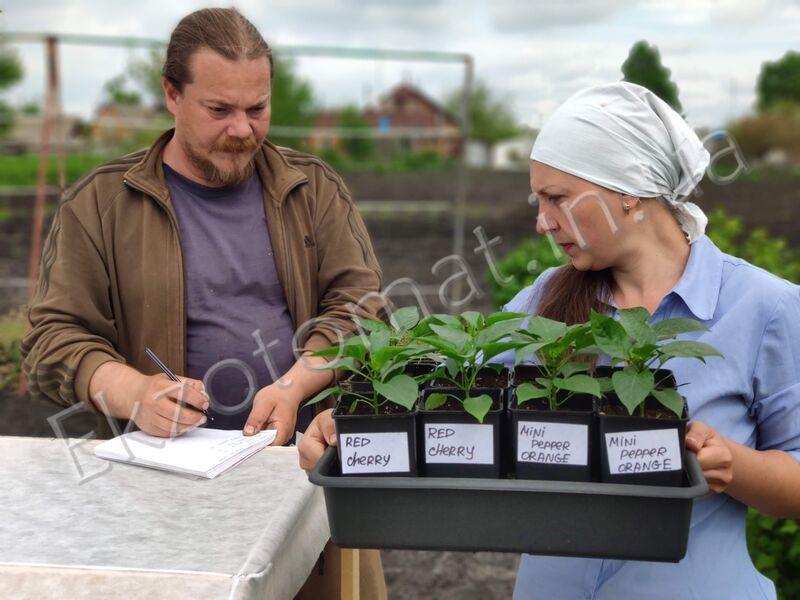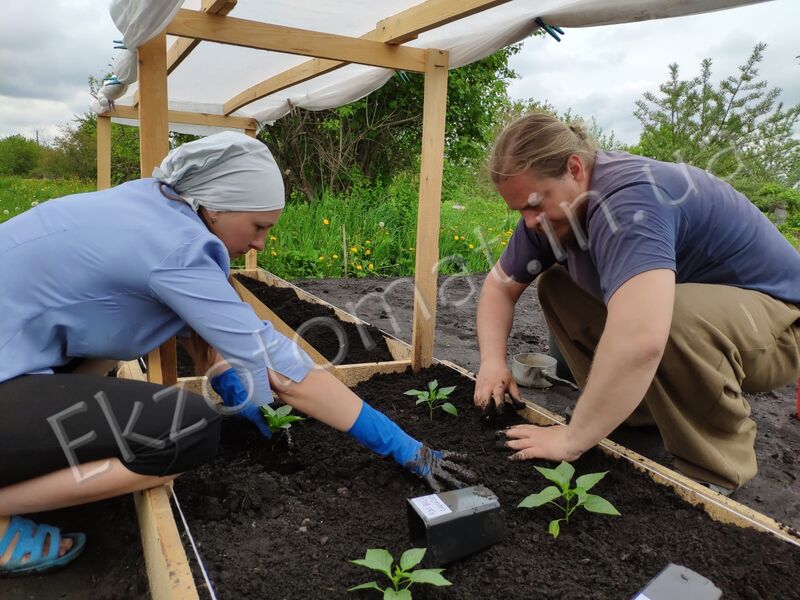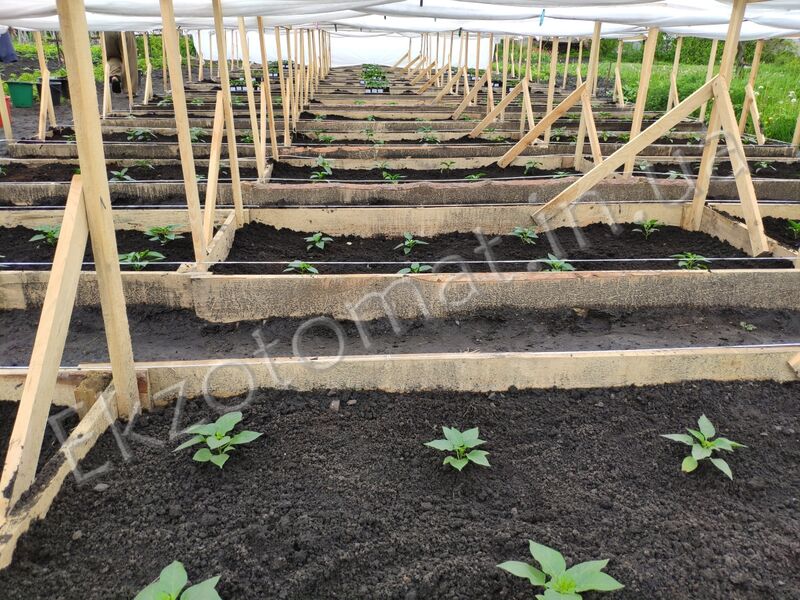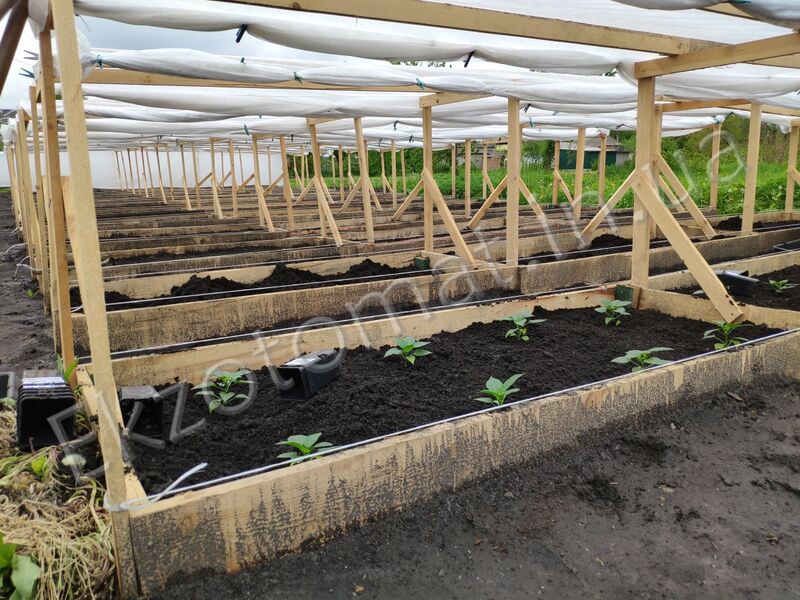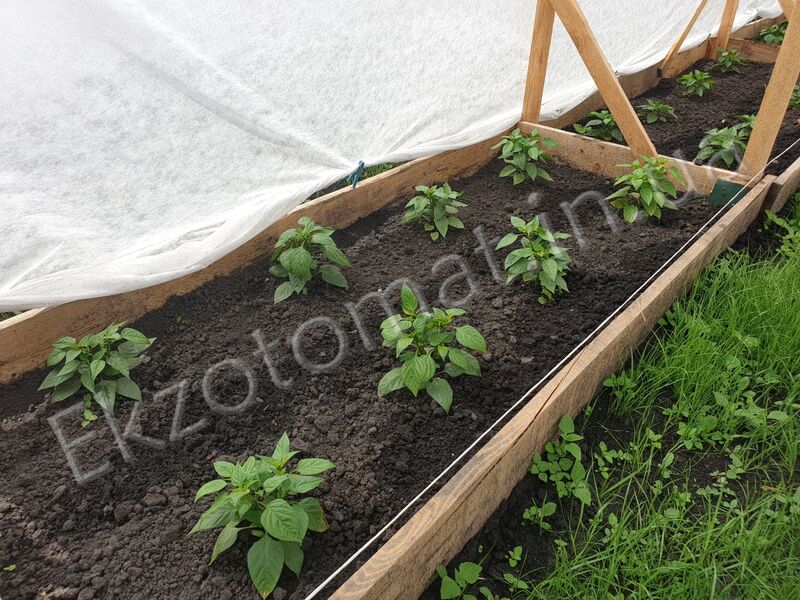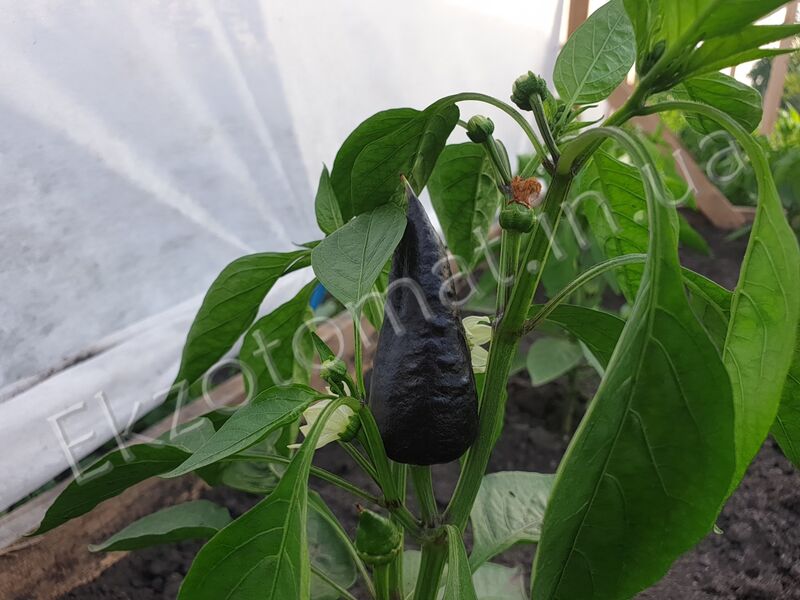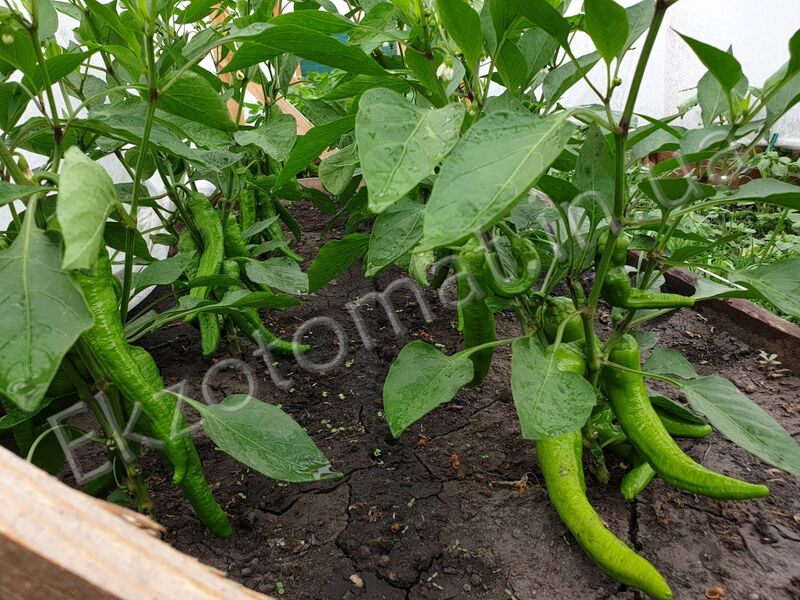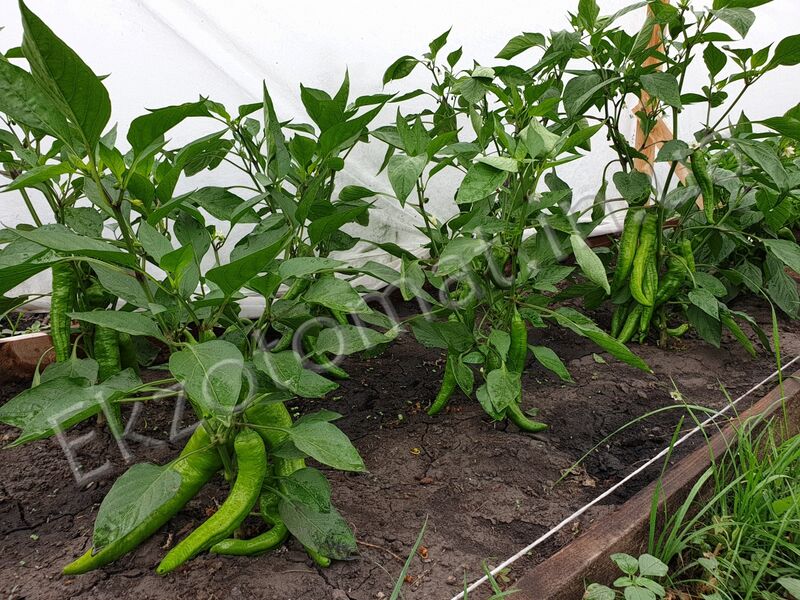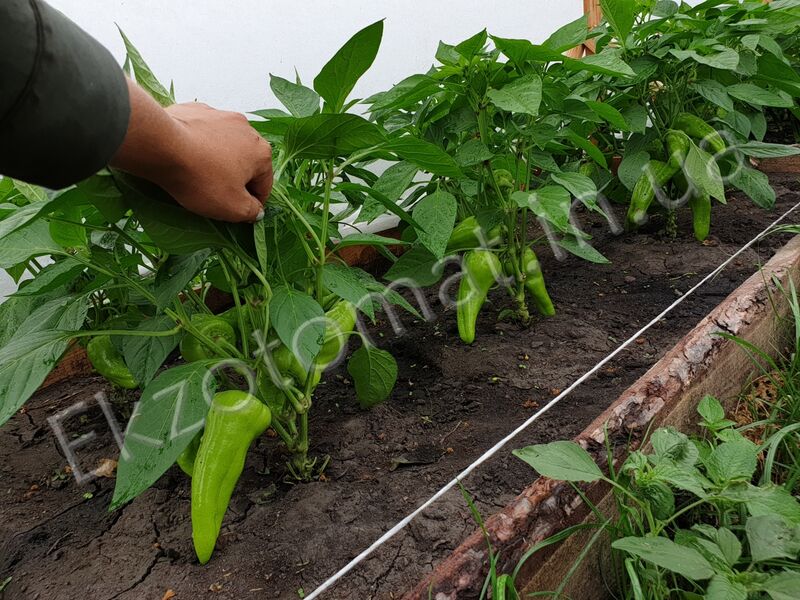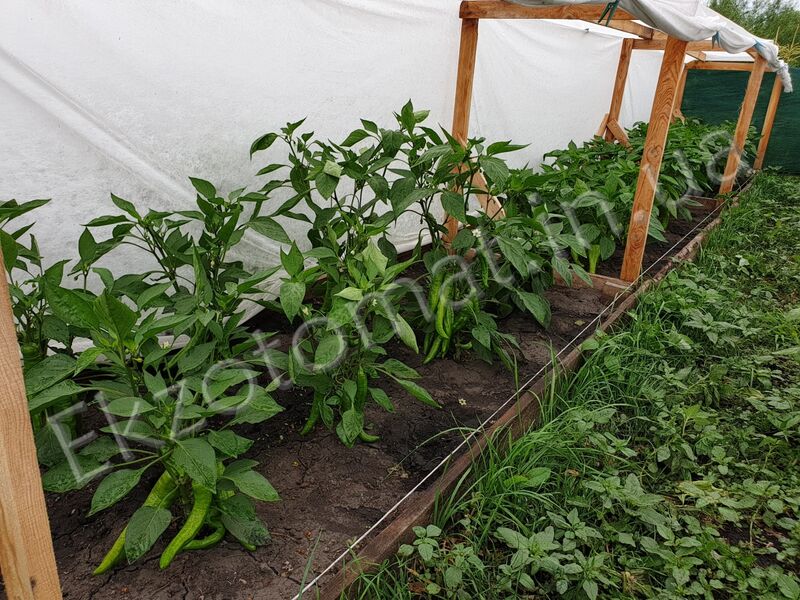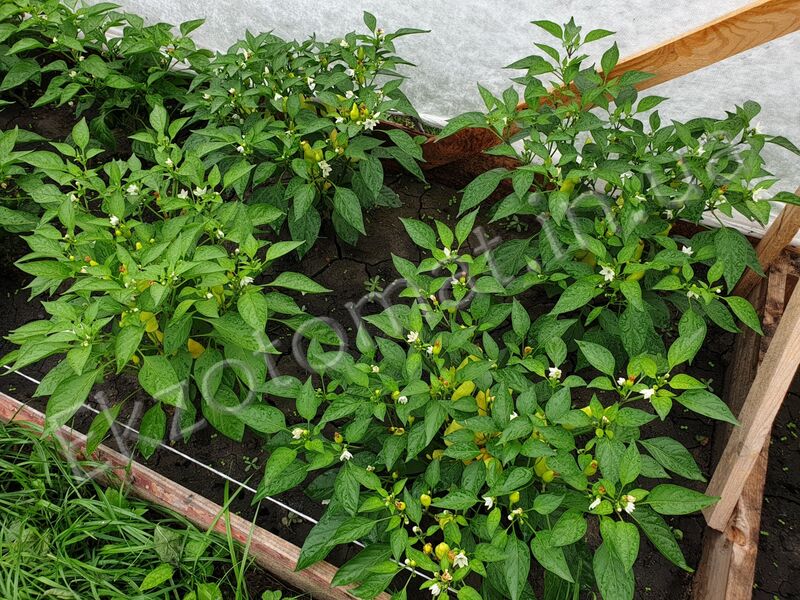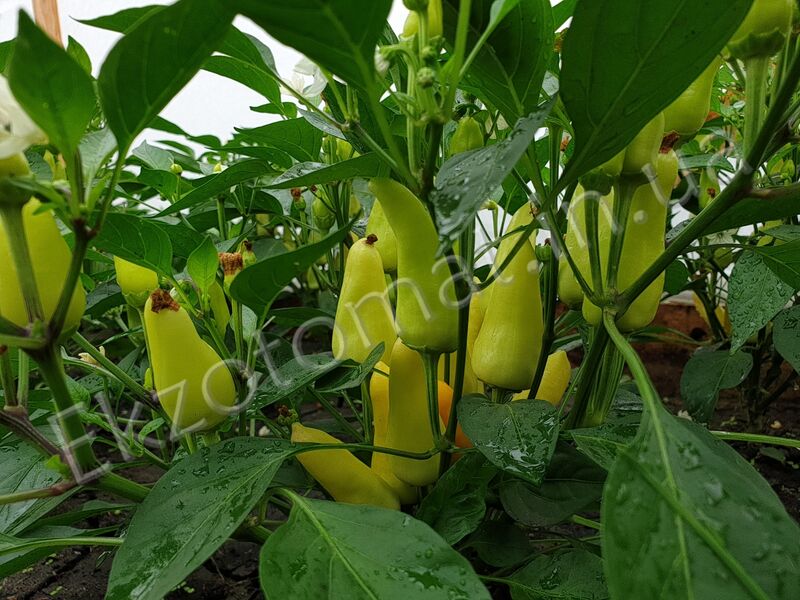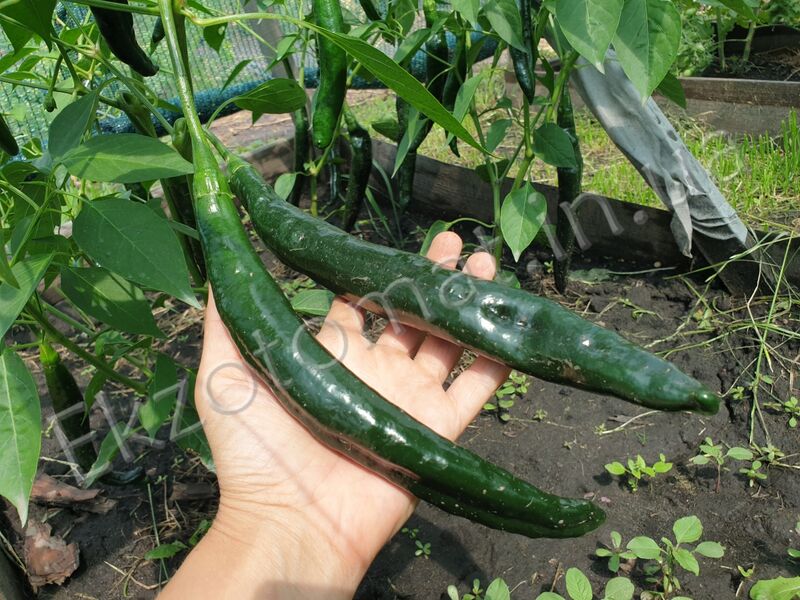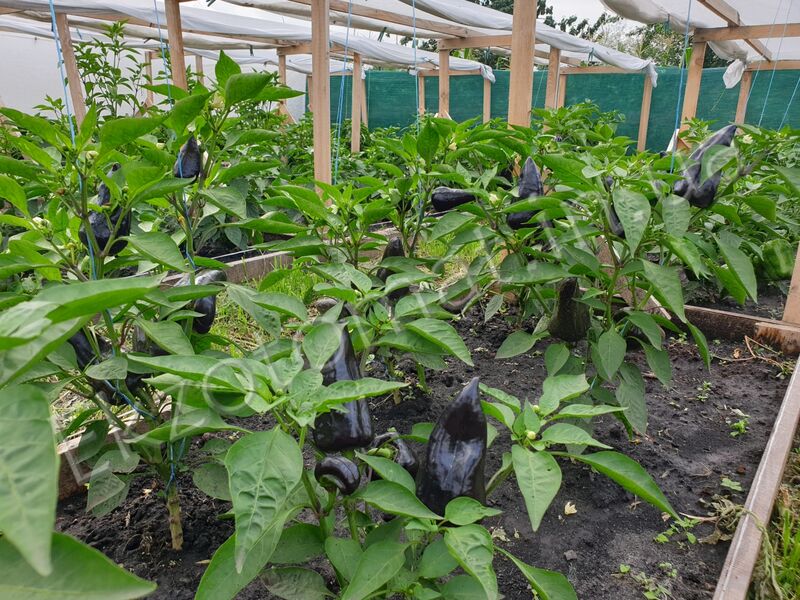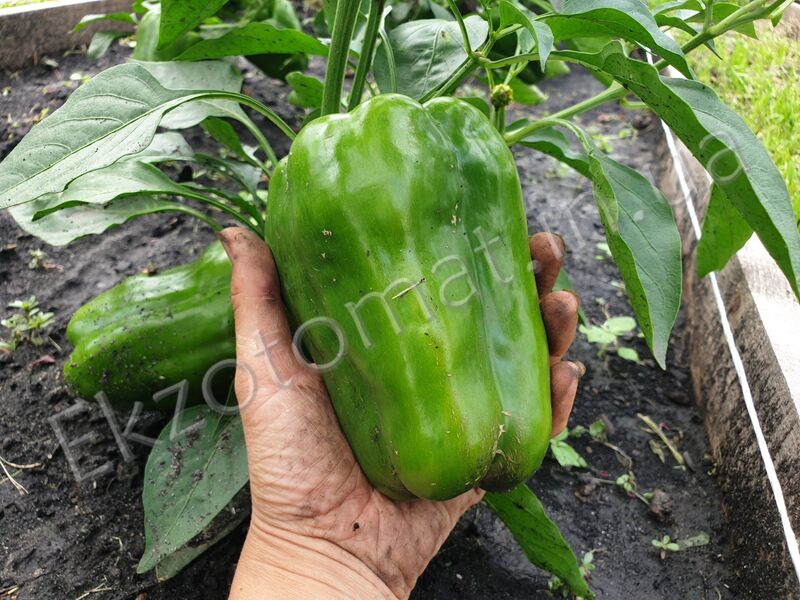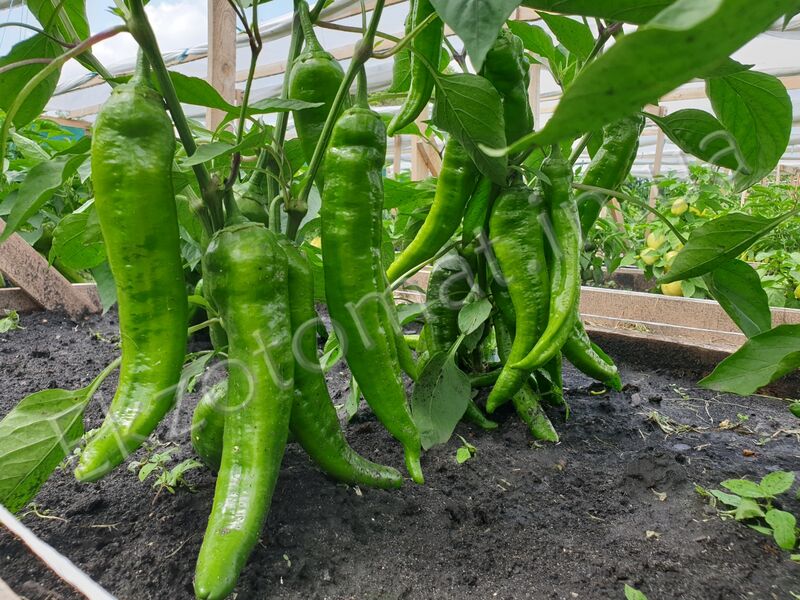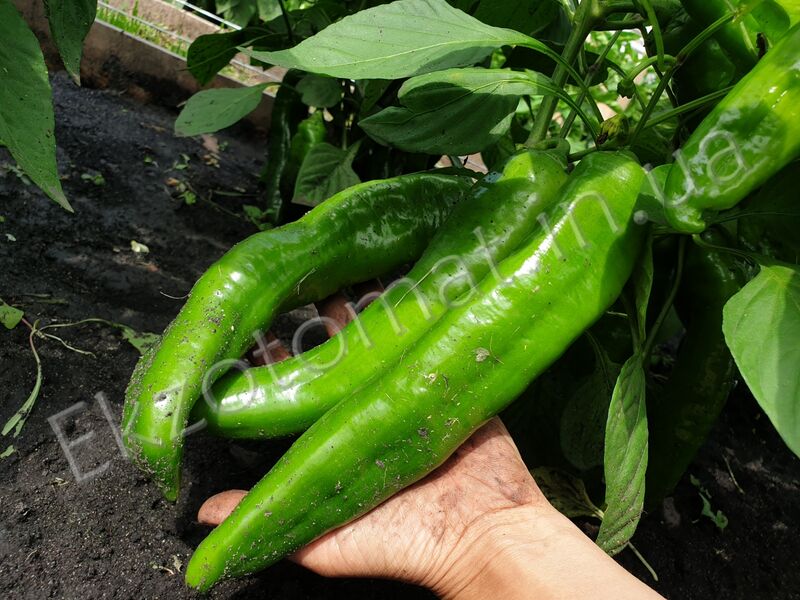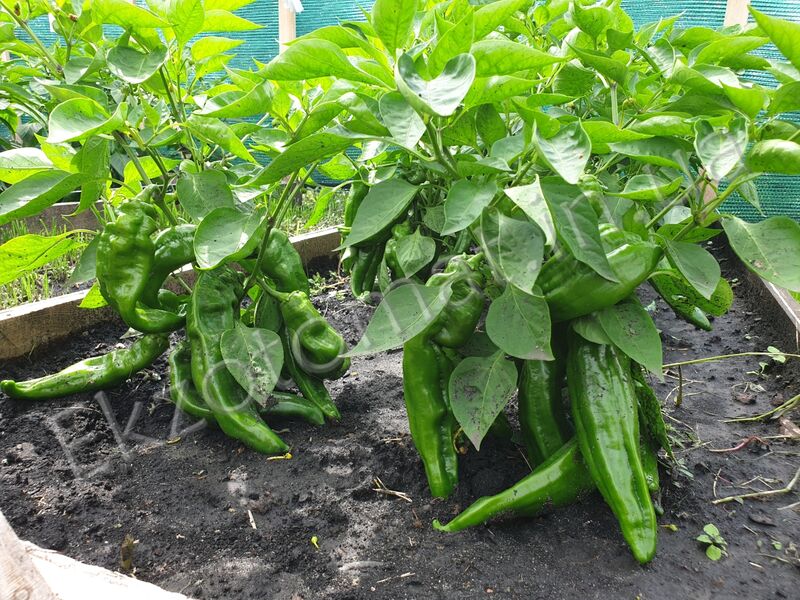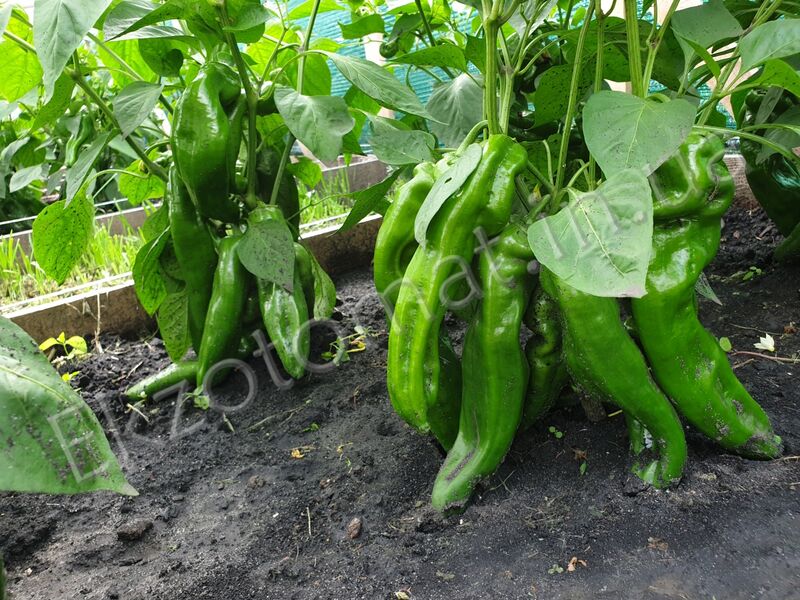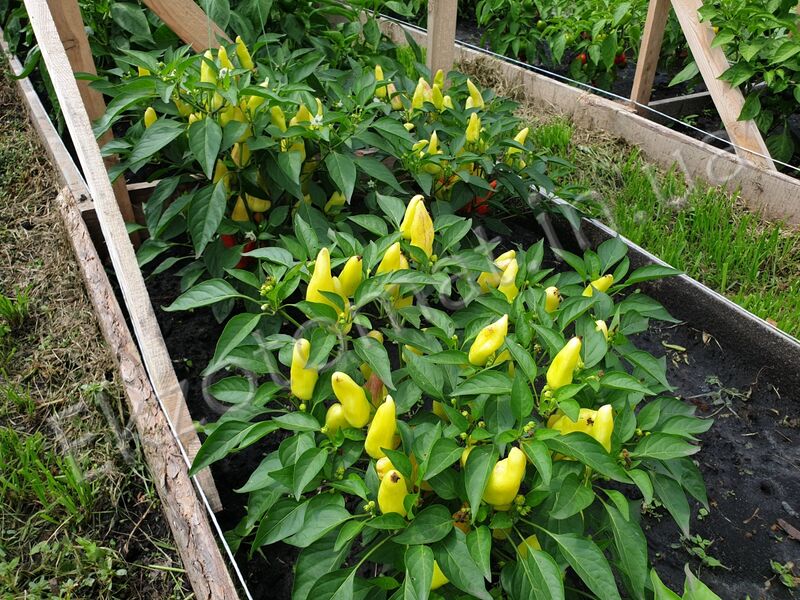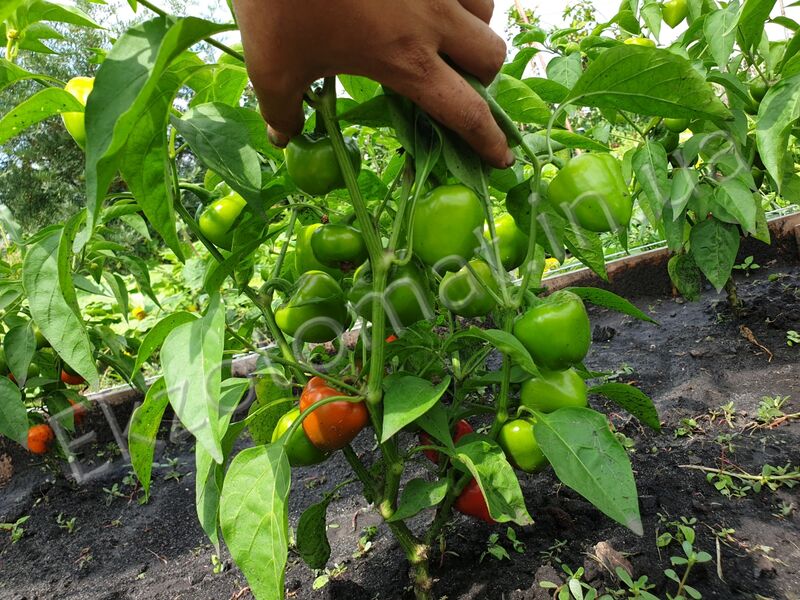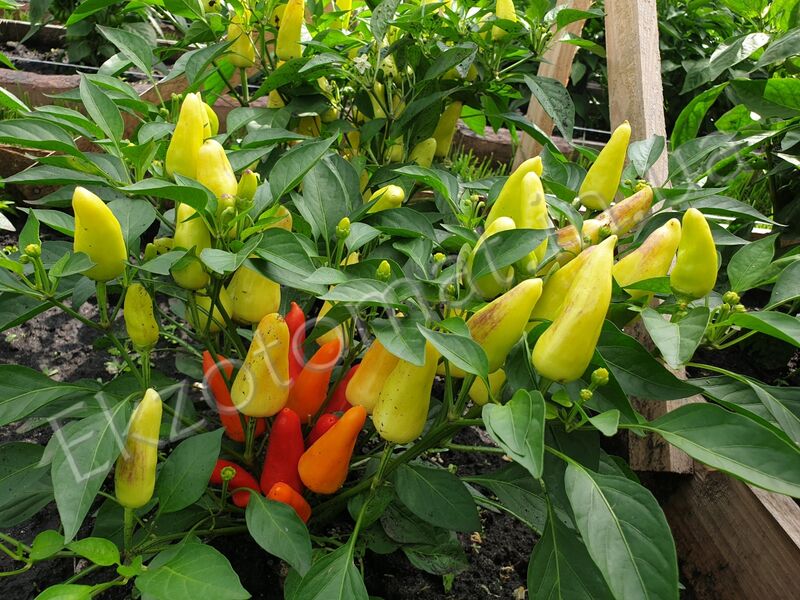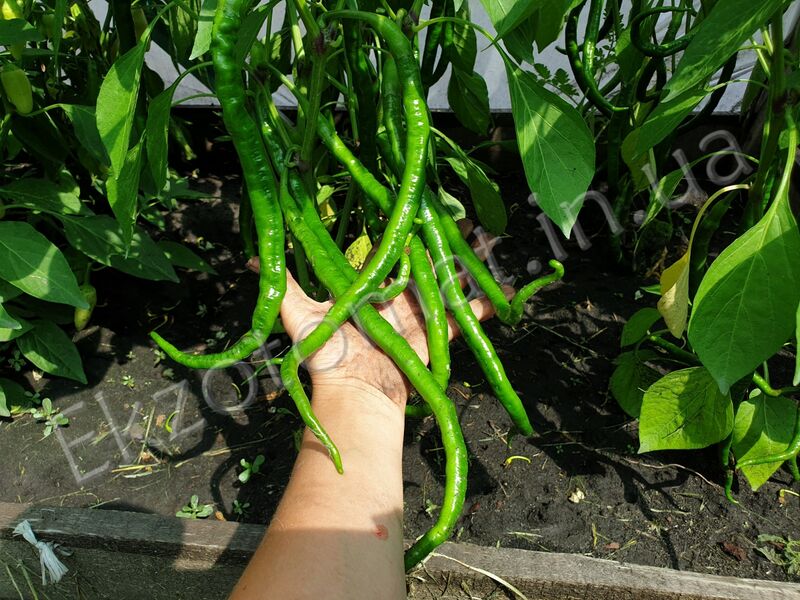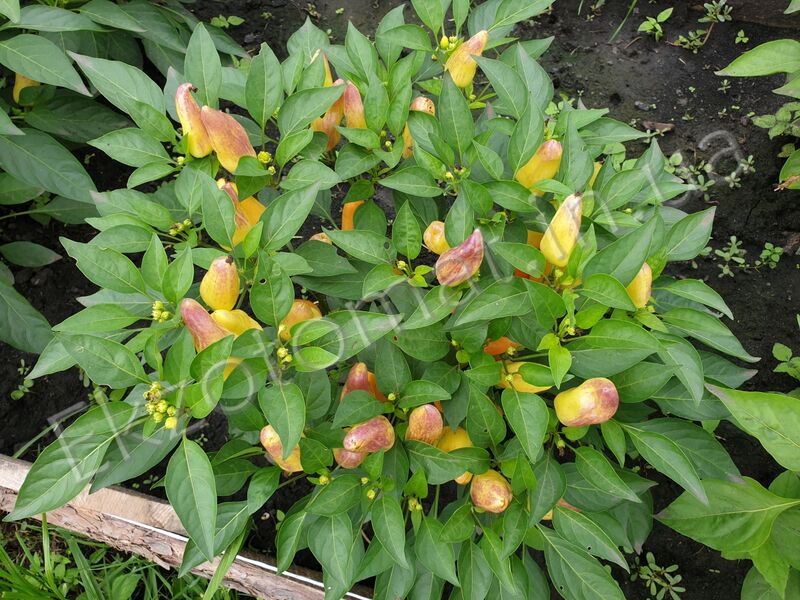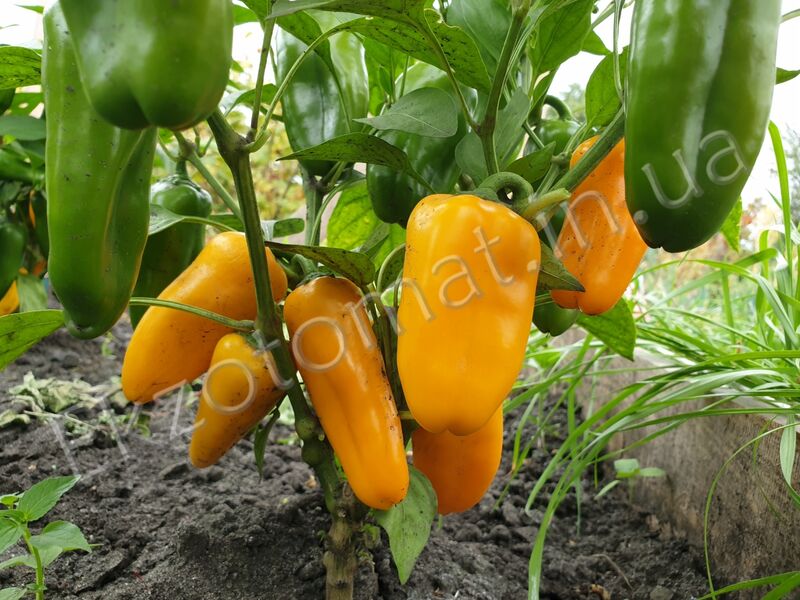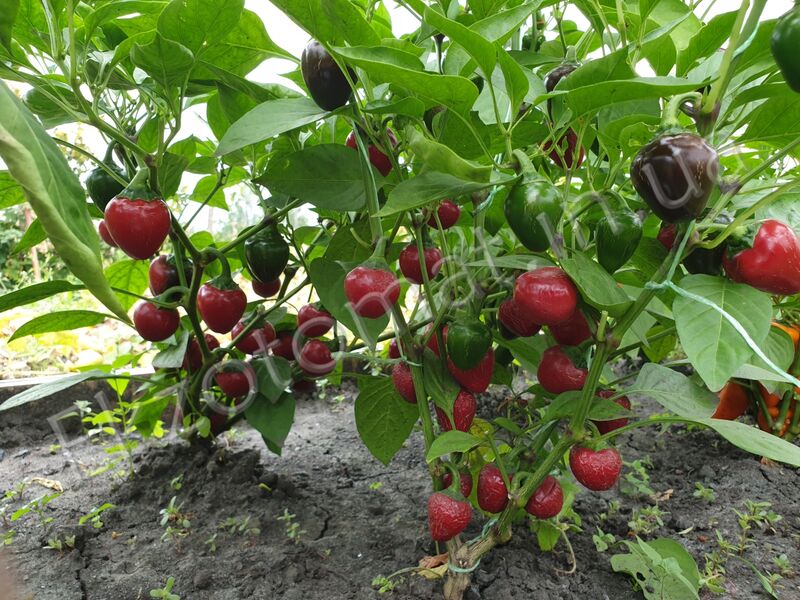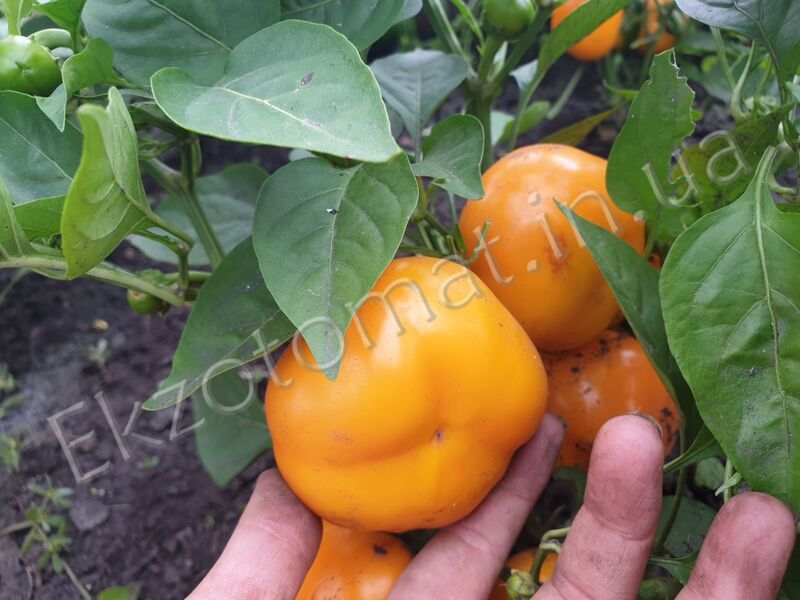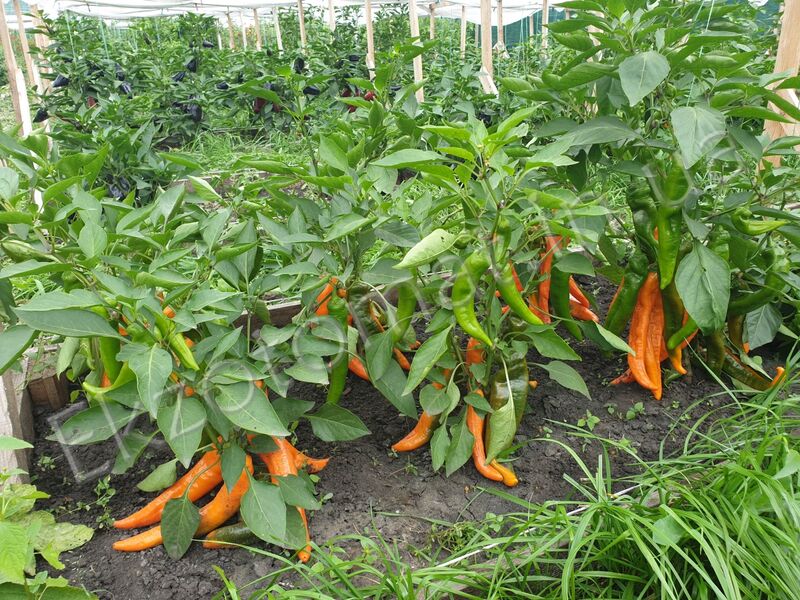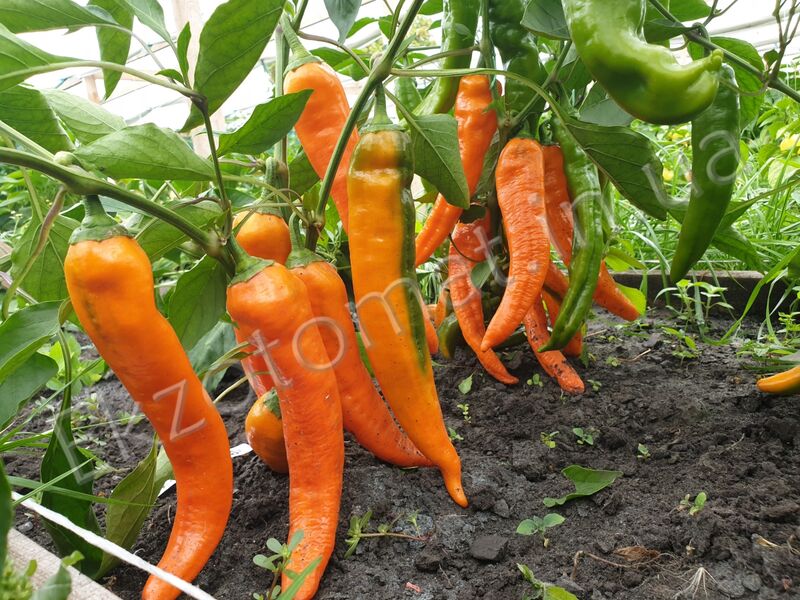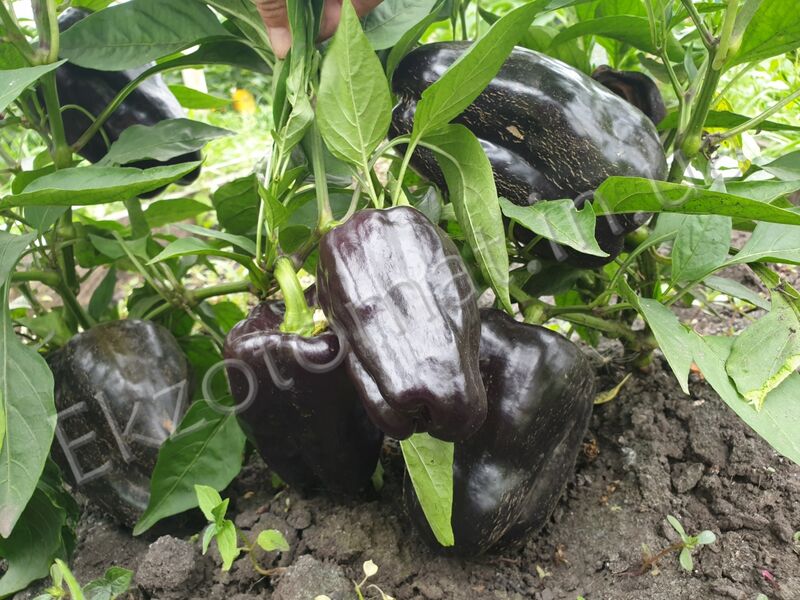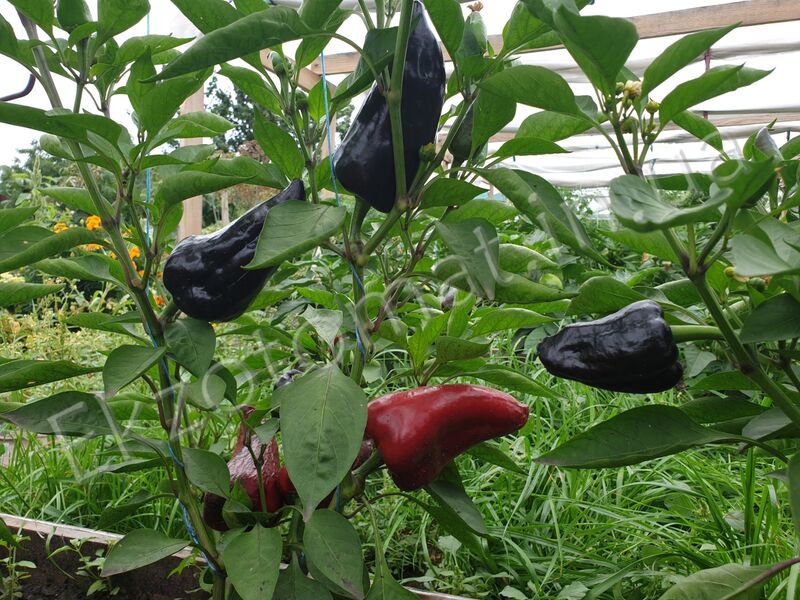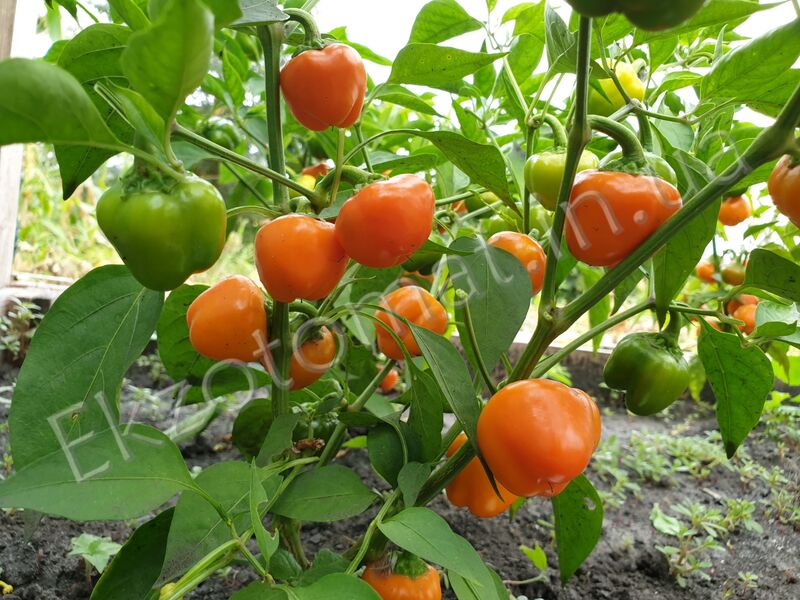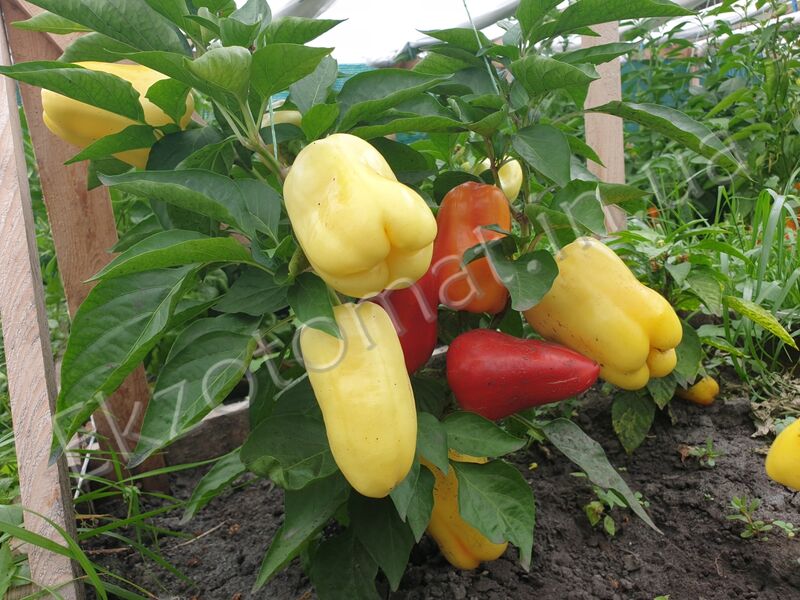As we grow peppers?
1. Prokleivanie samantara begins in late February or in early March. (Hot peppers should be sown earlier than sweet, at 1-2 weeks)Boarding calendars not in use. Seeds in no soak and not processed. For our region, climate (Kharkiv region) and llanasa believe farming is now the best time to start vyrashivaniem. If you have a different region and other agricultural machinery, the start time of seeding can also be different. Therefore, it is desirable to know the time of sowing the local farmers who continuously grow their own peppers. In other words. We plant in early March. You have a neighbor, friend, relative ask when it usually sows. In Odessa, for example, of course, can be sown in February, as the heat comes much earlier.
2. Before sowing the seeds sweet and spicy peppers we proclivities. For this we use: seeds, deep plastic drawers (for planting), cotton (or other natural), cloth, pen, notebook,plastic wrap and paper gum. Stickers to number drawers. Uvas may be other tools, different experience, different farming techniques. If you are a beginner, it is not necessary to repeat for us. It is important to examine more articles, videos on the Internet and choose the best option for you. For example, you do not have to buy boxes if you can germinate seeds on a conventional plate. All depends on the amount of seeds (and species) and sites for seedlings.
3. For starters select varieties of peppers for planting. Cut scraps of fabric and draw obiceiurile pen on a fabric mesh - 8 squares. Why not less or not more. We just so convenient. Each square numbered. But! If in the first box of 8 squares, the squares of the second box are numbered with numbers from 9 to 16. You know why? Suddenly you'll interchanges boxes, and inside them, because all the numbers are the same, from 1 to 8! Therefore, each box on the external side there is a sticker with a number. Inside on fabric numbers are not repeated. To avoid accidental entanglement. Cut the same piece of cloth, which we cover with seeds.
4. Take the notebook. Each page is dedicated to onomastico. Box number 1. In box #1 grade so-and-so, the box 2 - variety another. Recording numbers of boxes, number plates and varieties names of varieties.
5. Take the seeds and gently (not to spread) spread the seeds in the center of the square (not the border).
6.The warm water from the spray psyker seeds. Cover the top of the net (second) piece of cloth. To psycat must be so good promocijas fabric, but that water is not performed. Otherwise the seeds to suffocate.
7. Cover the top of the food, transparent film that can fix under the boards office rubber bands.
8.Put the boxes on the electric Mat temperature sensor. He peptic temperature sensor pokes through a hole in the foil so that it rests on the fabric. Exhibit temperature 25-27 degrees at night and day, constantly.
9.Every day it is necessary to open the edge of the film, to lift the fabric carefully to see the condition of the seeds. Spritz with water if moisture is not enough. But usually in the morning, you can tap your fingers on the edible film to the moisture, which has evaporated, fell back on the seeds. The film will always be sweaty, even a little bit. Using electric mats, you need to take responsibility for germination, it is possible to see, and then all the moisture will rise on the film and the seeds will dry up.But we prilovchilis and we are so very convenient. Who raised the bird through the incubator, he will understand.
10. Some varieties on day 3 begin to show roots! On the fourth day of new varieties hatch. On the fifth even more. And so to weeks. It is necessary every day to open, to ventilate, to depreciate water, choose the seeds hatched and put into glasses. Like hatched chickens transplanted to another location.
11.The size of the spine can be from 3 to 5 mm. This is the best size of the root below the seed to plant in the ground without injury. It can be formed thin, the side (suction) roots. But it is advisable not to wait for the root will begin to branch out.
12. Hatched to pick up the seed with tweezers or whether it is best wet somocistas.
13.Hatched seeds transplanted in disposable, plastic cups. Each Cup signed! Use paper labels. Marker on the plastic rubs off! You can sign whatever you like! Importantly, every Cup.
14. The land use of the purchase - TORFOSMESI UNIVERSAL 'POLESIE'. Tried another - no good.
15. In the bottom of the glass with a knife or scissors make a hole.
16. Fill with earth and plant shallowly hatched seed. Pour SLIGHTLY below the dirt around the seed.
17.On top of the glass cover with a piece of tape. Or you can make the glasses in the boxes and cover one large piece of film, fixed with elastic.
18.Boxes with cups, which has already planted the seeds hatched is also put on warm mats. Exhibited a temperature of about 22-25 degrees, smaller than for prokleivanija. If the temperature is stable and warm, the mats can not use.
19. Include fitolampy to the young peppers were light enough and young stems were not stretched. Include lamps in the morning (when awake) and off around 6-7 PM. Specially hourly not orientirueshsya.
20. Cups also viewed every day, open the film, see the state of the earth. If a little dry - pour. When there are loops, but have not really got out of the land,they also wetted with spray water. Then right in front of they are freed from the earth and the top with leaves up. Then on these cups, remove the foil.
21. When the ground came out of the loops and the first leaves electric mats off. Shine only fitolampy.
22.So, disposable (100 grams) cups come up a style. When the roots are fully amplitut earth com, will grow well, then we are doing the transshipment.
23. Handling must be done very carefully. To neinstalata to keep the integrity of the entire earth ball, in order not to break the roots. Take out as 'kulichikah' clod of earth from a Cup and handled 700 mililitros pot. (I have bought). In advance to spread the land. Inserting earth com with pepper. And then dobavitelj sides. A little stamped and poured some water. Each pot is also signed! That is, each.
24. So the roots get more space to sprawl.
25. Seedling is under the fitolamp.
26. Then just water when the earth dried.
27. Seedlings of peppers, nothing soiled. In torfosmesi universal 'Polesie' is a complex of trace elements and minerals.
28. All this pleasant bustle going on for the past 2 months. March-April.
29.In early may, when they leave the freezing night, exposed seedlings of peppers on the street under agrotextile. Even if the night is cool, the agrotextile protection from the cold. A day protects from gusty spring wind and bright sun, which can burn the leaves.
30. Usually after planting tomatoes in the open ground begin to plant peppers. It had happened after may 10-15.
31.Hot peppers plant in one part of the plot, and sweet peppers on the other side of the site, the maximum separated by great distance and many patches of tall tomatoes. Because hot peppers can Perepelitsa sweet. But the varieties, for example, the sweet pepper plant not far from each other. For example, 1 box - 1st grade (8 bushes). Cross-pollination is not excluded, but it happens very rarely.
32. Plant the seedlings of peppers, in a wooden box-beds, over which was built of planks of the crossbar in the form of a tunnel. So good cover agrotextile on top of them. AGROSALON fix believeme ordinary clothes pegs to ropes that extend on the bottom of the box. Top agrotextile fix to the boards construction stapler.
33. That is, the seedlings of peppers are planted under agrotextile. Further, when the bushes grow peppers, we discover the agricultural fiber on both side. On top of agrotextile in the garden remains.
34. When planting seedlings of peppers in the hole don't add anything, just pour. As the land we have is good enough nutrients, black soil.
35. Bury the seedlings can! But Nena a lot, a maximum of 2 cm given the fact that in a couple of days the loose soil still it settle a bit.
36. Size of box-beds we have such that can accommodate 8 bushes of peppers (and tomatoes). The width of the box 80 cm, long 2 meter. Perfectly fit 2 rows of peppers in 4 pieces in a row.
37.If the seedlings, the flowers appear, they should be removed. They so often fall, as when transplanting a plant is under stress. But if you don't fall off, they better get to plant all the power allowed for a successful rooting and healing.
38. While planting seedlings in the notebook are written the numbers of the rows and the names of the varieties planted.
39.After transplanting down agrotextile down, covering the sides of the beds. The microclimate under the agrotextile better, 'safer', than on the street.
40. Periodically open the agrotextile, pour with strong heat and dryness of the earth.
41.Now the Bush peppers are not asyncweb not primitive. Believe that enough of the resulting crop. Meanwhile, more, not so easy except pasynkovat more tomatoes and peppers.
42. When the bushes have grown and the fruits appear, some bushes need to be tied up. Since with increasing of fruit weight branches do not stand up and fall to the ground, broken.
43. For the garter, we just serve as the Board-partition of the so-called 'tunnel'.They are at a height of 1 m. First, tie a loop at the bottom of the stem. Raise the rope up to the crossbar, cut with the stock. Then the rope obtrusive around the stem and tie around a wooden partition at the top.
44. And so tie up all the long stems of the peppers, 3 to 6 stalks roughly.
45. If the peppers are not to be tied up, often after a heavy rain they fall down to the ground.
46.We are not fertilised peppers. Sometimes I use herbal infusions (there are many recipes online) and they always turn out a little different. But it is important to know that when peppers are increasing foliage, flower, fertilizers should be more nitric. But when the ovary and fruit, the plant needs other elements, usually phosphorus, potassium and Killi. Such fertilizer is ready, comprehensive, sold at markets, in specialized shops and online stores.
47. The main work with peppers in the garden is watering, surface cultivation of the soil and garter.
48.If you have slugs in the garden, you can try to use products with metaldehyde. Unfortunately, traditional methods do not always help. For the prevention from invasion of slugs is recommended to keep the soil clean and loose. We are mulching the tomatoes and peppers have stopped mulching, as it is near peppers in the mulch in our garden there was a lot of slugs and they ate a lot of peppers. While we like mulching, but mulch the peppers now fear.
49. When it comes time to collect the fruits, then we expect that they are well matured.
50.The collection of seeds. Cut the fruits out of the seeds in bowl of water immediately. So the seeds are cleaned faster. Water with seeds emptied into a plastic bucket, which is signed by the name of the class. A couple of minutes the seeds stand in water. Washed. Core rise to the top. Good seeds sink to the bottom. Empty the drained seeds on top. Heavy rinse again in a sieve. And spread on a plastic plate, which is also signed by grade. Drying lasts for two and a half weeks on stilazhi in the house. It is undesirable to dry the seeds on the street. As the wind, cats, dogs can flip the birds to peck. After cloudy weather the seeds can dry under direct sun perenositsya. Therefore, in the best house. After the seeds are poured into large zip-Loki and then MANUALLY move to exclude the curves of the little seeds.
51. On average, 500-700 bushes grown peppers. But every year the number of bushes will be constantly changing depending on the finding of new, interesting varieties.

